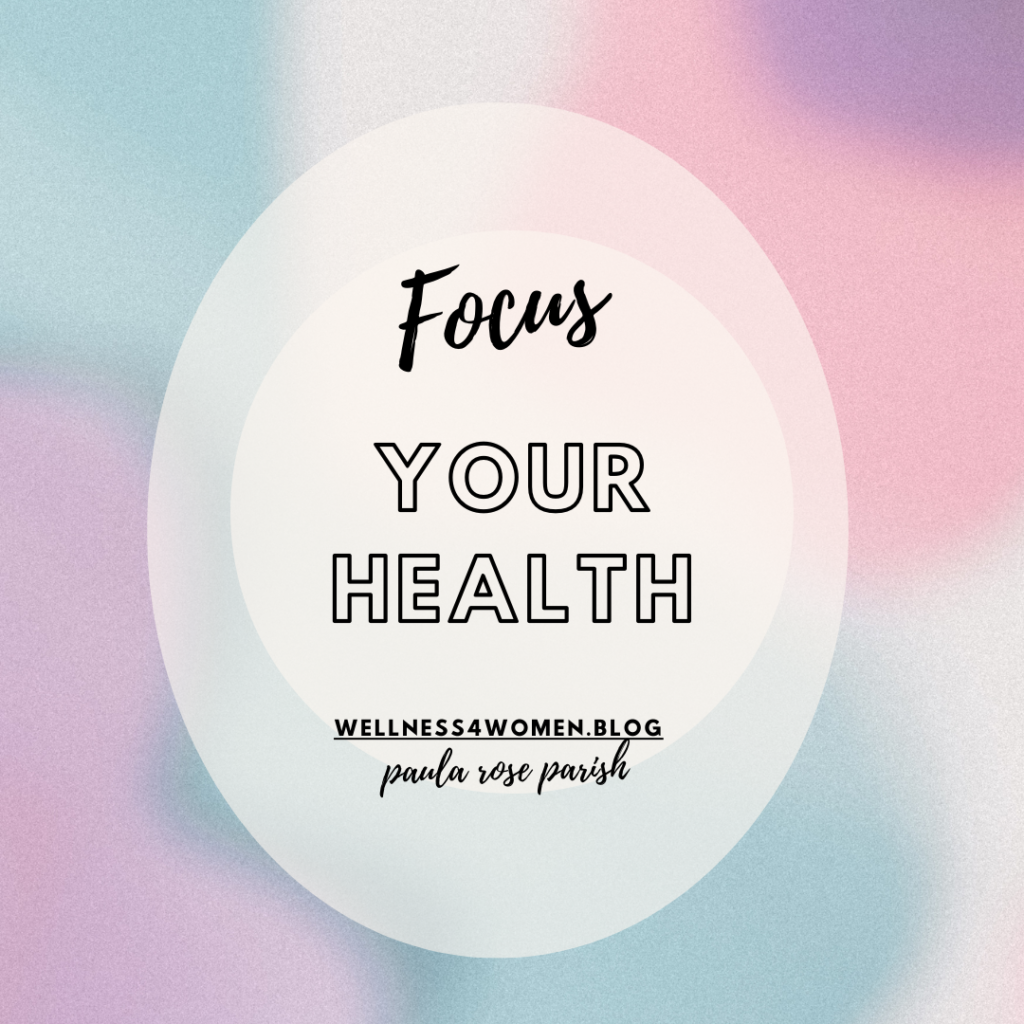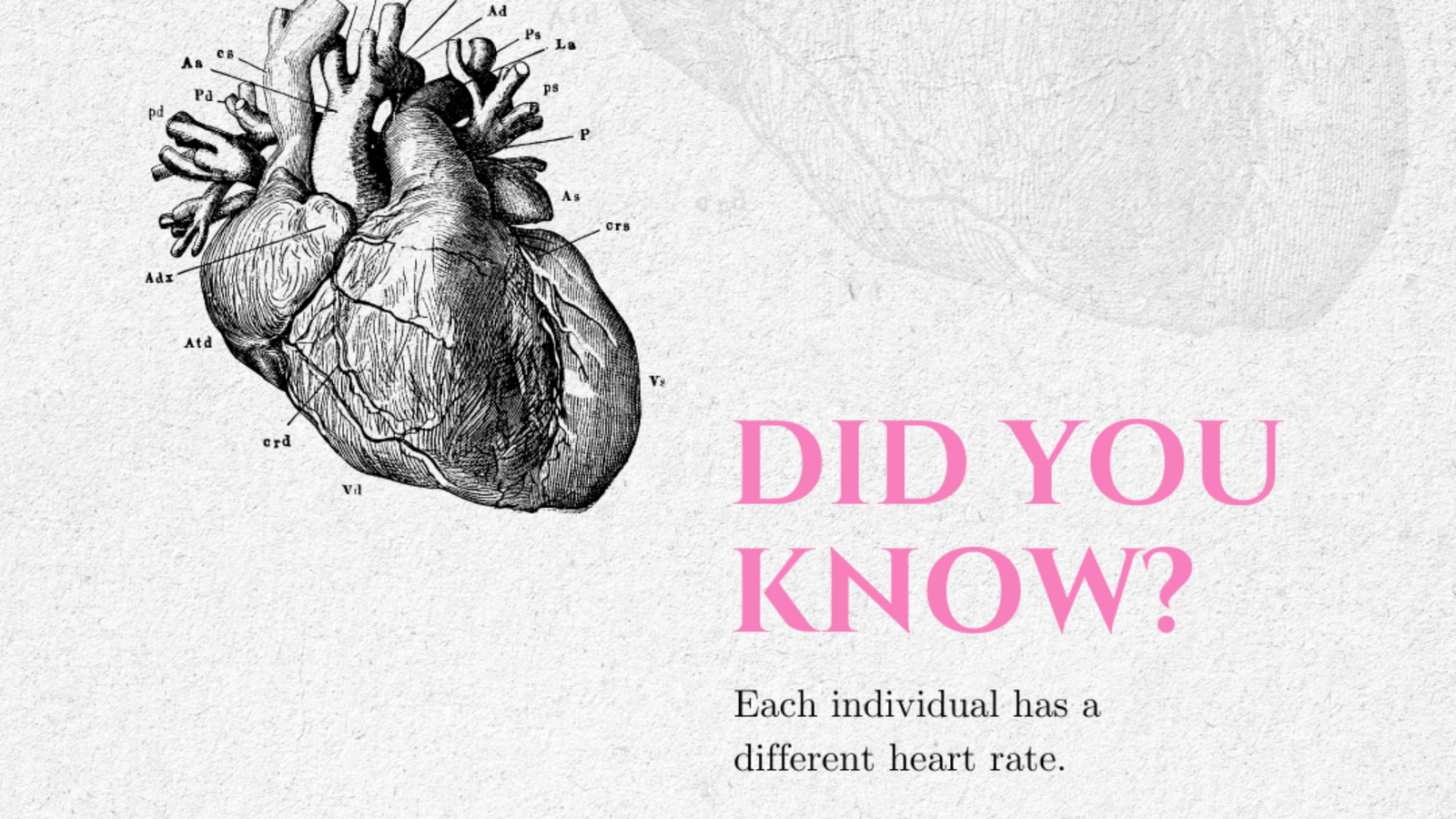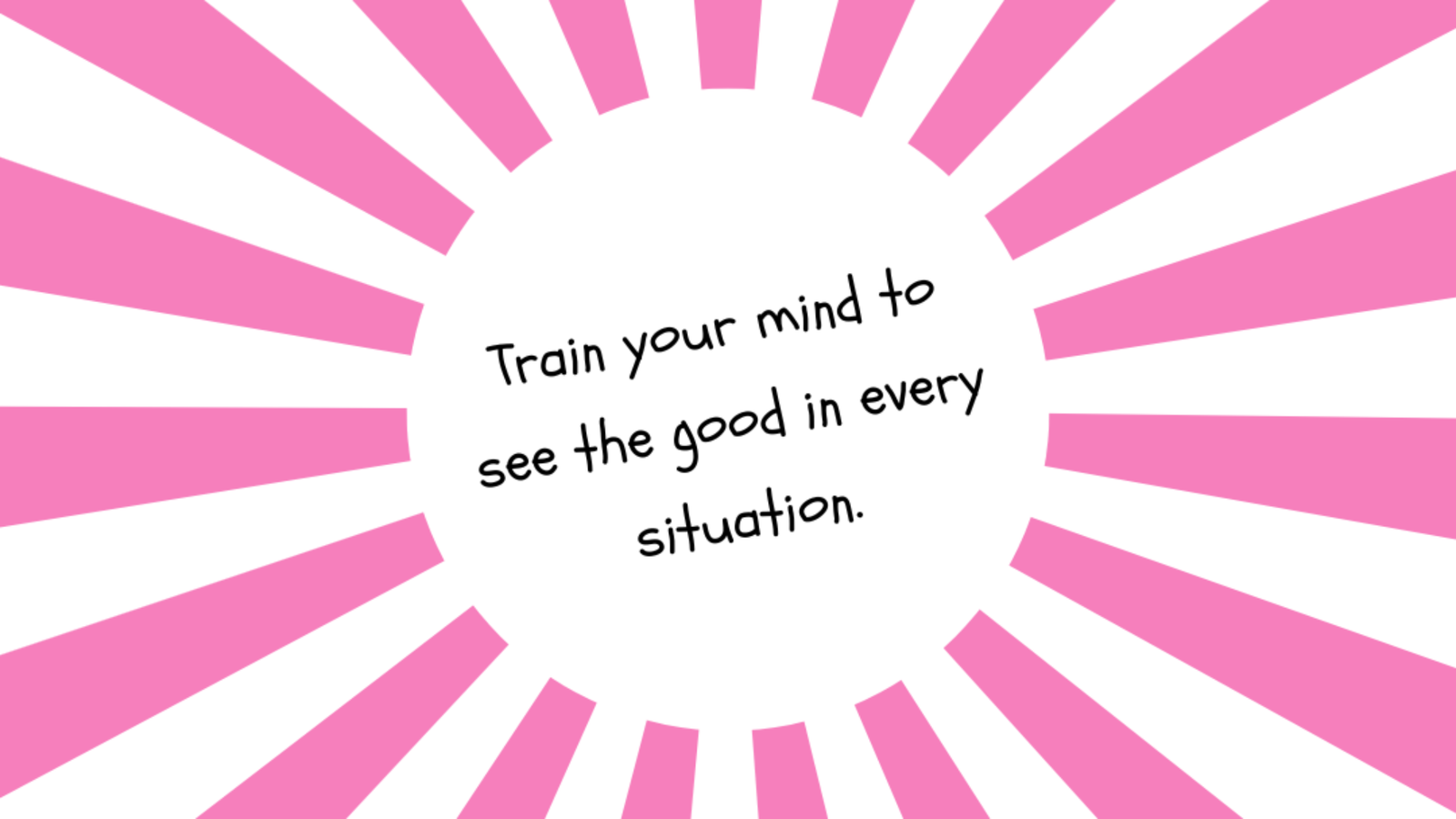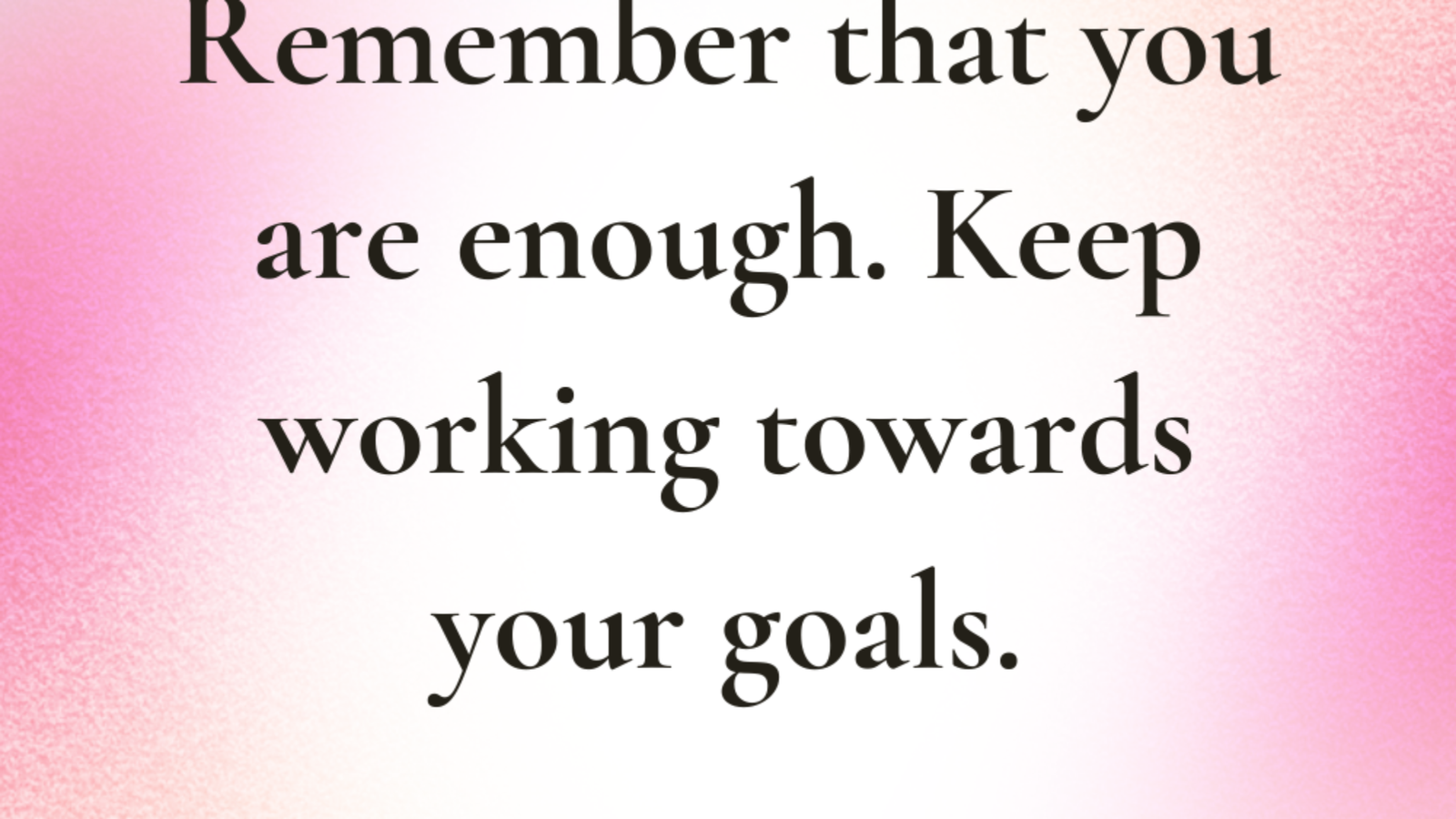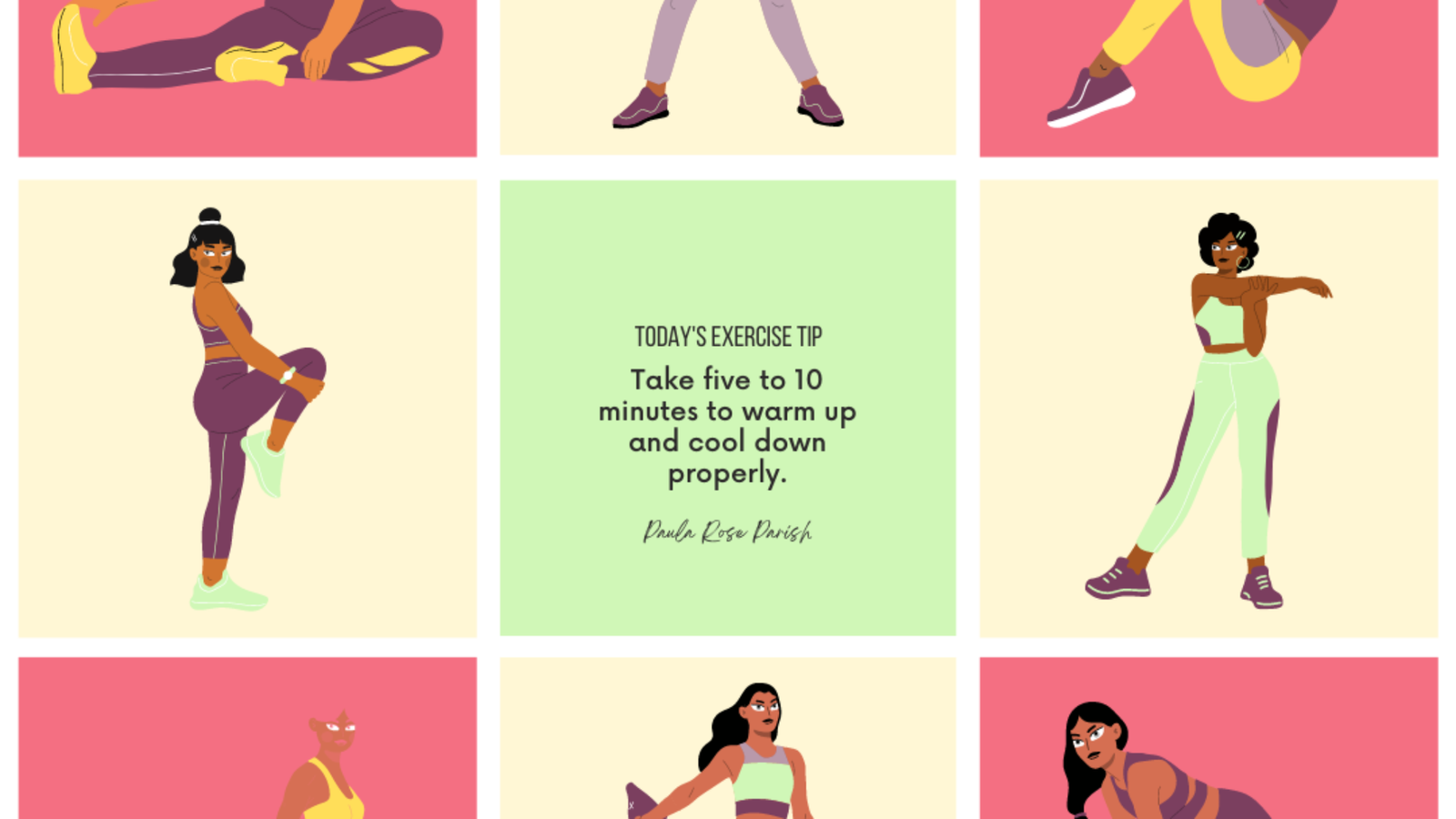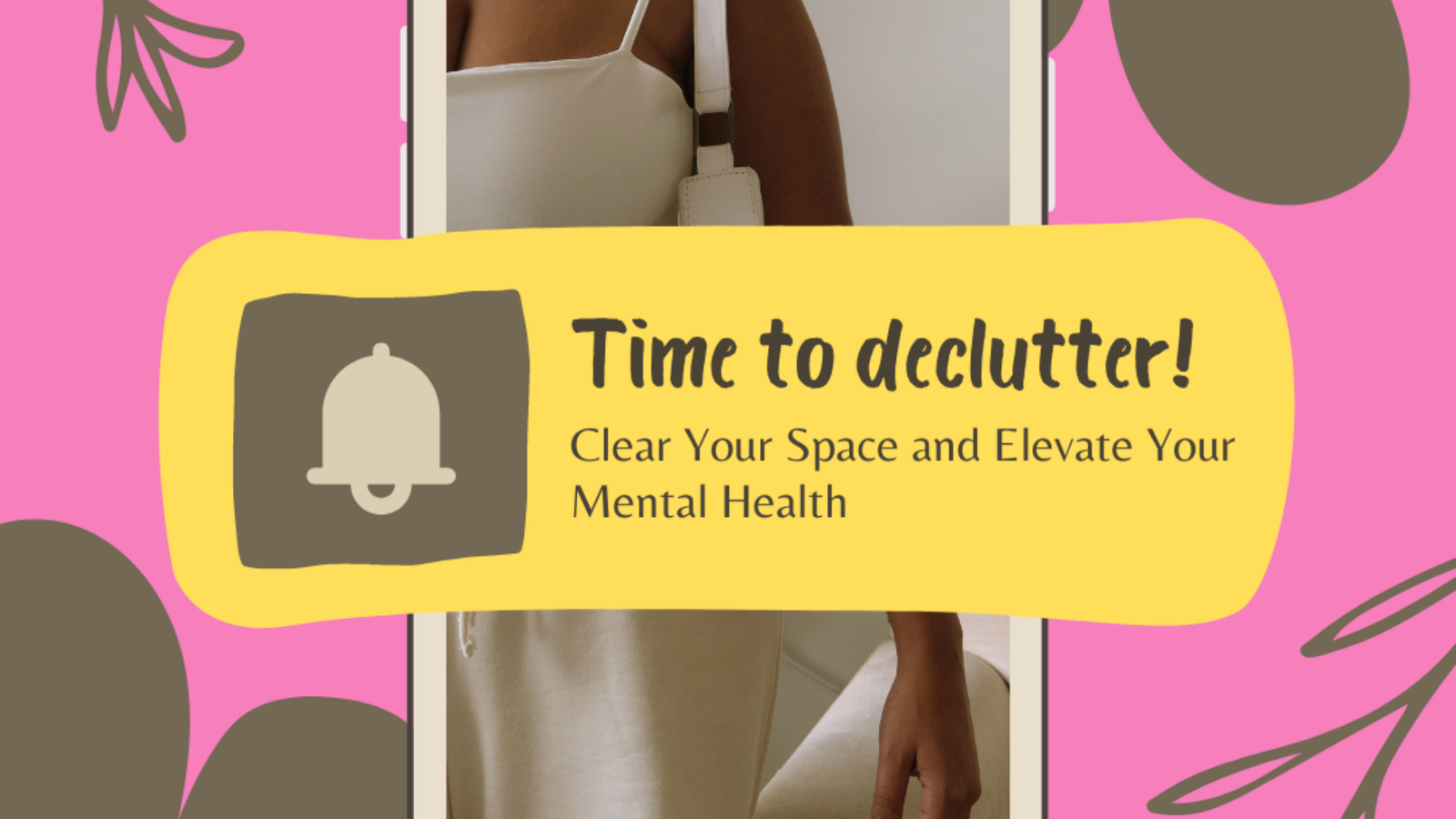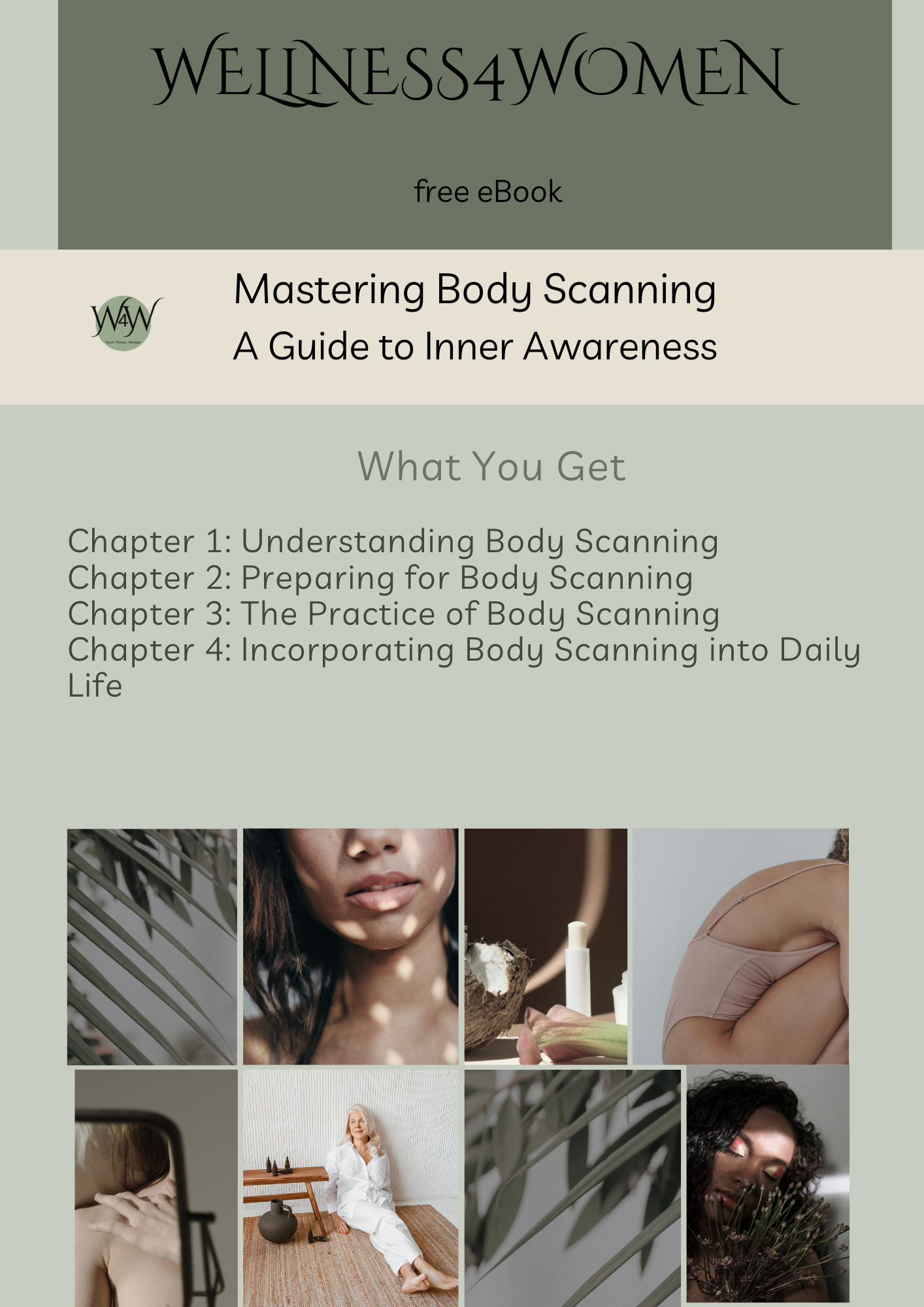Anxiety manifests as excessive worry, nervousness about various aspects of life, and an overall uneasiness about the future.
How Decisions Lead to Positive Outcomes.
It’s not easy to make short decisions like clockwork. Those who fail are true experts who have mastered their craft.
Embracing the Imperfect at Christmas
Happiness at Christmas doesn’t come from perfection but connection and mindfulness.
How to Cope with volatile relationships.
Here are several strategies to help you navigate situations and maintain your well-being:
How to Help a Friend to Survive Domestic Violence
Perhaps in the past, one of your friends had an abusive partner. And maybe you didn’t know what to do to help. The following strategies will inform you how to help a survivor of domestic violence.
1. What is Physical Abuse?
My spouse told me I upset him- it was my fault- and I believed him.
My Essential Guide To Heart Health
Without a healthy heart, we cannot prevent disease. In my wellness practice, I encounter women who do not know how to care for their hearts to prevent disease. In this article, I share my Essential Guide To Heart Health. Here, I share a few simple facts that will inform you about your most precious organ.
The heart is an important part of the circulatory system, and it’s responsible for pumping blood and oxygen throughout the entire body.
Take a moment to get in tune with your heart by placing two fingers against your neck just below your jawline. You can also try placing two fingers on your wrist, just below the base of the thumb. That bump bump feeling is your heart in action. It’s working hard to keep you alive and supply blood and oxygen to all the necessary areas in the body.
You can tell a lot from a heartbeat, including:
- The beating of a human heart can indicate if a person is healthy or not.
- It can also tell if you’ve recently exercised, experienced something alarming, or spotted a romantic interest across the room.
- The heart can even be used to detect lies, because the heart begins to beat faster when a person feels stressed or uncomfortable.
The heart is an incredible organ that works hard every day. The adult heart beats between 86,000 and 144,000 times each day.** Children tend to have a faster pulse than adults which means their hearts tend to beat between 100,000 and 158,000 times a day?—?amazing!
A healthy heart is exceedingly beneficial to the human body, but an unhealthy heart can cause numerous health issues. In fact, in most western countries, heart disease is the leading cause of death for men, women, and people of most racial and ethnic groups in the United States.
Some people are born with heart conditions, while others develop them over time. For some, heart issues are an unavoidable reality. For many others, the risk of heart disease can be significantly lowered with a healthy lifestyle.
A Closer Look at the Human Heart
The human heart serves an essential function in the body, but what is it and how does it work? What is unique about the heart and why is it so important to maintain a healthy heart? This section will give you a better understanding of the marvel that is the human heart.
What is the Heart?
The human heart is a muscular organ in the circulatory system that supplies oxygen and nutrients (in the blood) to tissues in the body. It is also responsible for removing carbon dioxides and other waste as it circulates in and out of the heart.
The heart rests at the centre of the body, slightly left of the centre. The adult human heart weighs between 8 and 12 ounces. Men’s hearts tend to weigh a bit more than women’s.
Parts of the Heart
The human heart has four chambers:
- Right ventricle
- Left ventricle
- Right atrium
- Left atrium
The bottom chambers: The right and left ventricles are responsible for pumping blood out of the heart. The right ventricle receives blood from the right atrium and then sends it to the lungs, which can be filled with oxygen. The left ventricle, the strongest chamber in the heart, pumps the oxygen-rich blood back into the body.
The top chambers: The right and left atrium are responsible for receiving blood entering the heart. The right atrium receives blood from the veins and then sends it on to the right ventricle. The left atrium receives oxygenated blood from the lungs and passes it on to the left ventricle.
What is Blood Pressure?
Blood pressure refers to the force used to pump blood and oxygen throughout the body. The heart creates this force.
When a doctor or nurse measures blood pressure, they’re checking to see how much force is used to circulate the blood through the body. Naturally, if your heart is beating faster your blood pressure may also rise, but there are other factors that lead to high blood pressure like smoking, stress, or lack of physical activity.
An unusually high or low blood pressure may indicate a problem in the circulatory system.
Fun Facts About the Heart
- The average heart is the size of an adult fist.
- The heart pumps around 2,000 gallons of blood each day.
- The heart can continue to beat even when it’s disconnected from the body.
- There are around 60,000 miles worth of blood vessels in the body.
- Women have slightly faster heart rates than men on average.
- Every cell in the human body gets blood from the heart except the cornea.
- Heart cancer is extremely rare?—?heart cells stop dividing early in life.
- New borns have the fastest heart rate, and it can be as high as 300 beats per minute.
- Despite popular opinion, your heart doesn’t stop beating when you sneeze.
Common Heart Conditions
There are many types of heart disease and heart conditions, but here we will be discussing some of the most common ones.
Here’s a quick look at common heart conditions:
- Coronary heart disease
- Angina
- Heart attack
- Heart failure
- Arrhythmia
- Valve disease
- High blood pressure
- Congenital heart defects
- Inherited heart conditions
- Sudden cardiac arrest
- High cholesterol
- Heart murmur
How to Care For Your Heart
Some of the things mentioned in the section above are products of genetics or circumstances, meaning there are outside controlling factors that couldn’t have been prevented. For many other heart conditions, lifestyle plays a large part in keeping the heart healthy.
Though lifestyle changes can’t 100% protect you from developing a heart condition, experts believe that they can significantly reduce the risk.
Here are some of the significant ways that doctors, scientists, and heart specialists recommend keeping the heart healthy- follow these important steps:
- Start a heart-healthy diet.
- Maintain a healthy weight.
- Lower your cholesterol.
- Maintain blood pressure within a healthy range.
- Get more exercise.
- Avoid using tobacco.
- Limit alcohol consumption.
- Lower stress.
- Use preventative care and take prescribed medicine.
Virtual Hugs, and Remember to Live Life on Purpose because Your Wellness Matters!

Hello, I’m Paula; I can help you enhance and maintain your health and well-being for a healthier and happier You.
I advocate Holistic living, which is not just about the practice of therapeutic interventions; it’s also about living life authentically—it’s about living Your Best Life!
In my blogs and videos, I share how to approach daily living ‘holistically’ for the healing, health, and wellness of Mind, Body, and Personal Development to be a healthier and happier You.
Affiliate Link: Got a YouTube channel? To Get More Views and Subscribers, click this link to get your free Tube Buddy today. https://www.Tubebuddy.com/pricing?a=Wellness4Women
As a wellness consultant and coach, I am committed to science-based holistic health and prioritise your well-being. I offer free initial consultations for those seeking to enhance their overall wellness.
However, if you have serious health concerns, I urge you to consult your healthcare provider for personalised guidance.
Please Subscribe to my Blog and YouTube channel so that you won’t miss out on posts.
Let’s embark on your journey to well-being together.
Remember, live life with intention because your wellness matters. Paula Rose Parish is a life member of (ISFP) The International Society of Female Professionals. And also earned qualifications in pastoral counselling and theology, a Master of Arts in counselling in professional development, and a BACP in life coaching. Paula Rose is currently working on her health and nutrition certification.
SHOP
Visit our W4W shop, where you’ll find my downloadable self-help books, planners and recipe PDF e-Books in my shop at https://wellness4women.blog
If you wish to connect with me, please do so at paularose@wellness4women.blog
0r paularoseparish@gmail.com
BOOKS
My books are available on AMAZON (coming soon on W4W website)
Paper back & E-Book- Nothing Good about Grief: Path to Recovery with Psalm 23
Paper back-Palm 23 Unwrapped: Hope in Difficult Times.
DISCLAIMER: Remember, your safety is our priority. If you’re new to psychological therapy, exercise, nutrition, or fitness or planning to start, it’s crucial to consult your physician. This blog/video is for educational purposes only and is not a substitute for professional medical advice or treatment. Your health and wellness matters, so please be safe.
#womenhealth #health #women #healthylifestyle #fitness #womenempowerment #wellness #womenhealthcare #weightloss #healthyfood #selfcare #love #motivation #healthy #healthcare #healthyliving #menstrualcramps #endometriosis #womenshealth #womensupportingwomen #menstruation #menopause #fibroid
How to Spend Your Morning Like a Successful Entrepreneur
Every successful entrepreneur seems to have a secret to their success. For some, it’s an ability to think outside of the box and take risks. For others, it’s staying humble, even when faced with huge success. While every entrepreneur is different, you’ll notice that there are also some things that they seem to share
For instance, talk to almost any successful business owner and they’ll tell you that a good morning routine is the key to unlocking endless opportunities.
Here are some of the things you can do to spend your morning like a successful entrepreneur:
Wake up early. While you don’t have to be an early bird to get the worm in business, it often helps. According to Richard Branson, the entrepreneur behind Virgin, wherever he is in the world, he makes a concentrated effort to get up at 5am.
Branson believes that getting up early helps him to spend more time with the family before he gets down to business.
Try going to bed a little earlier than usual and waking up early too. Research consistently proves that many successful people wake up well before the workday begins. How could you spend an extra hour before your commute?
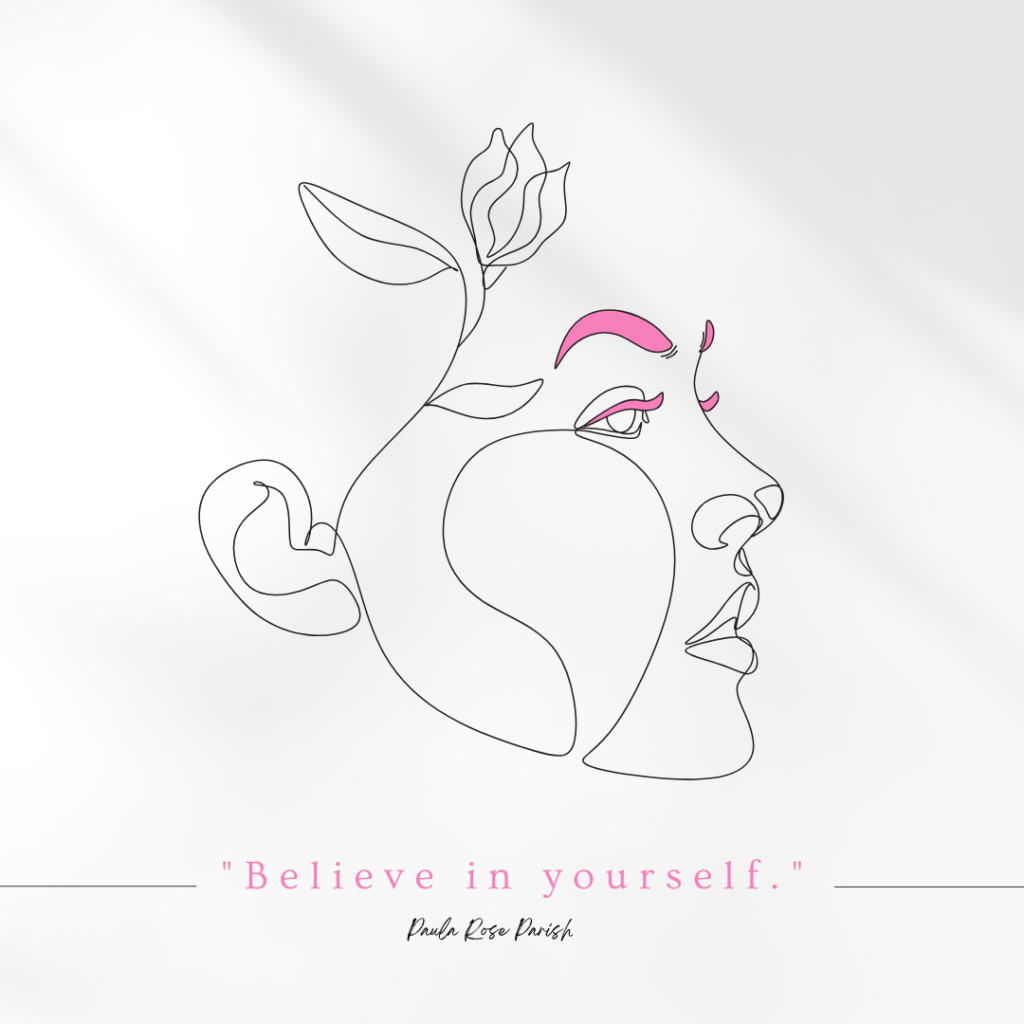
Be Prepared
How long do you spend each morning trying to figure out which tasks you should tackle first? Figuring out a schedule can take a lot of crucial time out of your routine for productivity. That’s why it’s so helpful to plan ahead.
- At the end of each workday, put ten minutes aside to make a list of the things you need to do first the next day.
- This way, you can start your morning by focusing on what you need to do and avoiding anything that might encourage procrastination.
- Exercise can do incredible things for the body and mind. Studies show that regular exercise increases energy levels and strengthens cognitive abilities. A few minutes of sweating before work can also help your body and mind. Studies show that regular exercise increases your energy levels and strengthens your cognitive abilities. A few minutes of sweating before work can also help you to clear your mind for the day ahead and reduce stress.
- If you’re wondering how to use that extra thirty minutes you’ve added to your morning each day, a mini-workout could be just the thing.
- Follow up with a healthy breakfast to nourish your mind, kickstart your metabolism, and give you the energy you need to handle the day. Drink some cold water, too. Huffington Post founder Arianna Huffington says she always starts her morning with a tall glass of water.
- Do the toughest job first. Are you trying to plan your day to facilitate success? Start with the most demanding task first. The idea of “eating the frog” comes from Mark Twain, and it basically means that you handle the thing you least want to do first.
- If you overcome your biggest challenge first, then everything else you do will feel easier by comparison.
- Plus, tackling and accomplishing a challenge first thing is a great way to motivate yourself.
- As the founding editor of Lifehacker.com, Gina Trapani tells us, your mind is clear first thing in the morning, and you’re not getting distracted by other demands. This is your chance to get things done!
- Get rid of distractions. If you want to seize the day like a successful entrepreneur, it’s important to avoid distractions. That means not constantly checking your emails and social media on your way to work.
- Starting the day with a heavy focus on social media and phone alerts also increases your likelihood of getting easily distracted throughout the remainder of the day.
- To start the day more helpfully, why not try an activity that relaxes you? Up to 90% of the doctor’s visits reported per year come from stress-related problems. If exercise doesn’t lower your stress levels when you wake up, find something that does.
- Illuminate the possibilities. Finally, if you’re struggling to start the day on the right note, brighten things up again. Turning on multiple lights around the home and opening your curtains will actively wake you up. It’s the best way to tell the brain that the day has started.
- Natural light actually tells your body to stop producing melatonin – the hormone you need for sleep.
- If you can, get outside and breathe in some fresh air. Natural light and a fresh dose of the great outdoors will put you in a great mood for work.
- If you can’t quite make it outside, don’t panic. Brightening your indoors will help too.
Find Your Own Routine
These are just some examples of how to spend your morning like a successful entrepreneur. Remember that you can always put your own spin on these suggestions. Find out what works for you and add some rituals of your own.

Once you find what works for you, stick to it. I hope these strategies are helpful to you. Ensure you subscribe- it’s free. We advocate preventive, holistic care, particularly for women over 50.
In the meantime, Live Life on Purpose Because Your Wellness Matters!
**Thank You:**A heartfelt thank you to everyone who supports .wellness4women.blog and our other platforms.
**Disclaimer** This video does not provide diagnosis, treatment, or medical advice. The content provided in this video is for educational purposes only. Please consult with a physician regarding any health-related diagnosis or treatment.
**Join Me:** Hello, I’m Paula; I can help you enhance and maintain your health and well-being for a healthier and happier You. I advocate Holistic living, which is not just about the practice of therapeutic interventions; it’s also about living life authentically—it’s about living Your Best Life! In my blogs, coaching, books and videos, I offer strategies to approach daily living ‘holistically’ for the healing, health, and wellness of Mind, Body, and Personal Development to be a healthier and happier You.
**Connect with Me
paularose@wellness4women.blog.
**Subscribe for More:**Subscribe- its free and receive regular updates and our free offers to enhance your wellbeing!
**Affiliate Link**Got a YouTube channel? To Get More Views and Subscribers, click this link to get your free Tube Buddy today. Just Visit –
https://www.Tubebuddy.com/pricing?a=Wellness4Women
**For Paula’s Books**
https://www.amazon.com/author/paularoseparish
https://wellness4women.blog/shop
DISCLAIMER: Remember, your safety is our priority. If you’re new to psychological therapy, exercise, nutrition, or fitness or planning to start, it’s crucial to consult your physician. This blog/video is for educational purposes only and is not a substitute for professional medical advice or treatment. Your health and wellness matters, so please be safe.
#womenhealth #health #women #healthylifestyle #fitness #womenempowerment #wellness #womenhealthcare #weightloss #healthyfood #selfcare #love #motivation #healthy #healthcare #healthyliving #menstrualcramps #endometriosis #womenshealth #womensupportingwomen #menstruation #menopause #fibroid
Social Anxiety Disorder Check List :how to Overcome!
I have experienced Social Anxiety Disorder. Just the thought of going out my front door would trigger panic attacks.
Simple Wellness Self Reflection & Affirmations
Wellness Self-reflection is the process of consciously examining one’s thoughts, behaviours, emotions, and experiences to gain deeper insight into oneself.
It involves looking inward to evaluate one’s actions, decisions, and motivations in order to understand why one thinks or behaves in certain ways and how one can improve or grow.
This practice is often used for personal development, emotional growth, and decision-making, as it helps individuals make sense of their experiences and align their actions with their values and goals.
Key Aspects of Self-Reflection:
- Awareness: Self-reflection requires understanding of your internal processes, like emotions, beliefs, and thought patterns.
- Evaluation involves assessing the effectiveness of your actions, behaviours, or choices and determining whether they are serving you well or need adjustment.
- Growth: The ultimate goal of self-reflection is personal growth, as it helps identify areas for improvement, foster better decision-making, and lead to positive change
Benefits of Self-Reflection:
- Improved Emotional Intelligence: It helps you understand and manage your emotions and empathise with others.
- Better Decision-Making: Reflecting on past experiences helps refine your future choices by learning from mistakes and successes.
- Increased Self-Awareness: It cultivates deeper knowledge of your strengths, weaknesses, and personal values.
- Stress Reduction: Self-reflection can provide clarity and reduce stress by helping you understand and process challenging experiences.
Common methods of wellness self-reflection include journaling, meditation, or simply setting aside quiet time to think. Regular practice can lead to a more mindful and intentional approach to life.

Say these daily, and believe them- for your mind to change and be more optimistic!
I am in awe of my body and how it looks after me.
I understand that my body is responsible for incredible processes and should be respected.
I ensure I look after my mental well-being. I remind myself of how important I am to the world.
I tell myself I deserve to be happy and celebrate my life and everyone in it.
I think positively, creating moments of happiness and reminding myself what I am grateful for.
I exist in the present moment.
I take care of my physical health. When I go for a run, I can feel my body working.
I know I have to respect my body.
I eat healthy foods and enjoy learning to cook.
I turn cooking into a social activity and encourage others to be healthy.
I am privileged to be part of a healthy community.
I take time to laugh and to see the joy in life.
I remind myself to look at the beauty and the intricacies of the world around me.
I find joy in every moment I spend in nature.
I am thankful I am part of this world.
Today, I appreciate the incredible journey my body is constantly making.
I look after my mental and physical well-being and celebrate my body and the fantastic miracles it performs.
Wellness Self-Reflection Questions:
- Am I eating healthily and looking after my body?
- Am I looking after my mental well-being?
- Am I smiling and laughing and enjoying the world around me?
Wellness is a holistic journey that nurtures your mind, body, and spirit. Self-reflection and affirmation are powerful practices that can help you stay connected with yourself, overcome challenges, and cultivate a positive mindset.
Regularly engaging in wellness, self-reflection can empower you to live a more intentional, balanced, and fulfilling life. So, start today by setting aside time for self-reflection and creating affirmations that resonate with you.
Remember, the journey to wellness begins within YOU!
I hope these strategies are helpful to you.
Ensure you subscribe—it’s free. We advocate preventive, holistic care, particularly for women over 50.
In the meantime, Live Life on Purpose Because Your Wellness Matters!

Affiliate Link: Got a YouTube channel? To Get More Views and Subscribers, click this link to get your free TubeBuddy today. https://www.Tubebuddy.com/pricing?a=Wellness4Women
DISCLAIMER: Remember, your safety is our priority. If you’re new to psychological therapy, exercise, nutrition, or fitness or planning to start, it’s crucial to consult your physician. This blog/video is for educational purposes only and is not a substitute for professional medical advice or treatment. Your health and wellness matters, so please be safe.
Blame Game: Why It’s Always a Lose-Lose Situation
It’s easy to be remarkably unsuccessful by blaming others. The other downside is that you can do nothing if someone else is at fault. The best you can do is hope they’ll step up and fix the situation for you. Let’s face it: playing the blame game is always a lose-lose situation.
However, when you take responsibility, you give yourself permission and the motivation to resolve your challenges, and you will succeed.
It’s possible that you:
? had horrible parents
? were made fun of by your third-grade teacher
? had a boss who enjoyed making you miserable
? lack talent
? lack education
? are old or young
The list goes on.
If you want to be successful, you must take responsibility for everything in your life, good or bad. You must also forgive those in your past and move on.
While the circumstances may not be your fault, no one else will take responsibility for improving the situation. You can fix anything if you’re willing to hold yourself responsible. Any other perspective creates a sense of helplessness.
Even if you lack talent, education, or opportunities, using those as excuses accomplishes nothing. A lack of talent can be overcome with hard work. A lack of education can’t stand up to a library full of books.
Create your own opportunities.
No one’s parents attended formal parenting school. Even if you were horribly mistreated, the only sensible option is to let it go and get on with your life.
Realise that your past choices have resulted in your current situation. Your current choices will determine your future situation.
Avoid blaming outside issues for your predicament. The blame game is a dead-end street.
Instead- take control of your life by taking responsibility for everything.
The saying goes, “With great power comes great responsibility.” It’s just as accurate to say, “With great responsibility comes great power.” Use your power.
“Turning pro is a mindset. If we are struggling with fear, self-sabotage, procrastination, self-doubt, etc., the problem is that we’re thinking like amateurs. Amateurs don’t show up. Amateurs crap out. Amateurs let adversity defeat them. The pro thinks differently. He shows up, does his work, and keeps on truckin’, no matter what.”
– Steven Pressfield
I hope these strategies are helpful to you.
Ensure you subscribe- it’s free. Ensure you subscribe- it’s free. We advocate preventive, holistic care, particularly for women over 50.
In the meantime, Live Life on Purpose Because Your Wellness Matters!

Affiliate Link: Got a YouTube channel? To Get More Views and Subscribers, click this link to get your free TubeBuddy today. https://www.Tubebuddy.com/pricing?a=Wellness4Women
DISCLAIMER: Remember, your safety is our priority. If you’re new to psychological therapy, exercise, nutrition, or fitness or planning to start, it’s crucial to consult your physician. This blog/video is for educational purposes only and is not a substitute for professional medical advice or treatment. Your health and wellness matters, so please be safe.
For more articles like this one CLICK HERE
Quick Tips For Better Meal Planning
No more confusion over what to Cook!
Better Meal planning can be an excellent way to upgrade your relationship with food. There are several benefits to figuring out (and prepping) what you’ll be eating in advance.
Meal planning can minimize the amount you spend on food shopping. Better Meal planning is also about Buying a bulk ingredient (like chicken) and using it in several meals.
You can also give yourself a clear list of ingredients to follow when you go to the grocery store. This means you’re less likely to go “off-budget” than if you were browsing the aisles.
Plus, meal planning can help you stick to your diet. If you’re trying to cut down on fast food, having your meals already prepared is a great way to get started.
So, where exactly do you get started with meal planning?
Start With Your Go-To Meals
Successful meal planning doesn’t mean you must spend hours scouring a cookbook every night to develop new, affordable recipes. While it helps to look for new ideas occasionally, you can start with some of your favourites.
Pick meals you’ll be happy to eat at any time that are relatively easy to make. It’s also worth focusing on food that doesn’t cost a fortune.
Starting with the meals you already feel comfortable with means you don’t have to learn how to cook something new from scratch.
Find a Designated Place for Recipes
You may stumble across the occasional recipe you want to try. Find a designated place to store those recipes for later reference.
For instance, you might have a folder in your kitchen to turn to when you’re running out of ideas. You may want to use a Pinterest board to visually browse your options at a glance and see what makes your stomach rumble.
Use Building Blocks
At the beginning of each week, choose a couple of different types of protein, one or two grains, and a vegetable collection. You can prepare all of these foods in advance, then look for ways to incorporate them into different meals as you go.
For instance, if you start with bacon and sweetcorn, you can have a pizza on Monday, wraps on Tuesday, a pasta dish on Wednesday and so on.
This is a fantastic way to reduce your meal prep time. It can also save you some serious cash, as you can buy a selection of items in bulk rather than paying for a wide range of individual ingredients.
Leverage Frozen Ingredients
Frozen ingredients are your friend because they can be easily divided into different meals according to your needs. For example, you can divide a bag of frozen vegetables between several meals throughout the week and get them prepped in no time.
Not only do frozen products save you time, but they can also save you cash. It’s usually more affordable to buy frozen food than to go fresh every time. You don’t need to stick to frozen for every meal, but you might find it makes meal prepping easier.
Get Input From The Household
When organising meals for the whole family, it’s easy to get hyper-focused and forget about simple things, like asking your loved ones what they want.
Talking to your roommates and family about what they might like to eat will inspire you if you run out of ideas.
You’ll also get the extra benefit of knowing the meals you cook are ones your loved ones will look forward to eating. This can make life much easier if you’re a parent and plan meals for kids.
Schedule a Lazy Day
Meal prepping and planning are great ways to control your budget and time. However, it’s not always easy to follow a schedule. There will be times when you feel your planned meal for the evening just isn’t the right choice, given the circumstances.
With that in mind, give yourself the freedom to skip that day and cook whatever you like.
Plan a lazy night every week when you can make whatever you want without worrying about using pre-prepped ingredients and recipes. If you make your pre-prepped meals freezer-friendly, you can always eat them another day without waste.
Remember, better meal planning can be an excellent way to upgrade your relationship with food.
Keep a weekly-to-week routine when planning your meals to reduce confusion about what to eat. Planning spells success!
I hope these strategies are helpful to you.

Ensure you subscribe—it’s free. We advocate preventive, holistic care, particularly for women over 50.
In the meantime, Live Life on Purpose Because Your Wellness Matters!
Affiliate Link: Got a YouTube channel? To Get More Views and Subscribers, click this link to get your free TubeBuddy today. https://www.Tubebuddy.com/pricing?a=Wellness4Women
DISCLAIMER: Remember, your safety is our priority. If you’re new to psychological therapy, exercise, nutrition, or fitness or planning to start, it’s crucial to consult your physician. This blog/video is for educational purposes and is not a substitute for professional medical advice or treatment. Your health and wellness matters, so please be safe.
Why Bother with Personal Development?
Develop your life into what you have always wanted.
Some of my clients ask me why should they bother with personal development. It seems like a lot of work for nothing!
Although it may often seem like hard work with no quick results. Personal development and joy are integral to leading a meaningful and satisfying life.
In my experience, personal development is a continuous journey of self-improvement.
Self-discovery and pursuing personal goals lead to a deeper sense of purpose and contentment.

Understanding Personal Development:
We need to be proactive in our approach to our own development.
Personal development is the conscious pursuit of personal growth. It’s about expanding our minds to self-awareness.
Improving skills and cultivating virtues are crucial to your self-development.
To elevate your self-development, you must set and work towards goals that align with your values and aspirations.
This process is not limited to any single aspect of life but encompasses all areas, including emotional, intellectual, social, physical, and spiritual growth.
Personal development is about becoming the best version of yourself?—?as you see your best self.
It involves learning new skills, gaining knowledge, and improving emotional intelligence. This could mean anything from career advancement to enhancing interpersonal relationships, improving physical health, or cultivating a positive mindset.
Personal development is an effort on your part. It requires self-reflection, commitment, and the willingness to step out of one’s comfort zone.
The Role of Joy:
Joy is living a fulfilled life. Joy is the feeling of satisfaction and contentment that comes from living in alignment with one’s values and achieving personal goals. It is the sense of completeness and happiness.
This arises when individuals feel they are on the right path and progressing toward their life’s purpose.
Joy is deeply personal and varies from person to person. For some, it might be found in a successful career, while for others, it might be in nurturing relationships, creative expression, or contributing to a cause greater than themselves.
It’s important to note that joy leads to fulfilment but is not a destination but a state of being.
It is achieved through the journey of personal development, as one continuously strives to live authentically and meaningfully.
The Interconnection:
Personal development and fulfilment are interconnected.
Pursuing personal development leads to fulfilment.
The feeling of fulfilment encourages further personal growth.
This cycle creates a positive feedback loop where the more one grows.
The more fulfilled you feel, the more fulfilled you feel, the more you seek further growth.
However, the journey is not always straightforward. It often involves overcoming obstacles, facing fears, and dealing with setbacks.
However, we learn and grow the most through these challenges. Each step, whether a success or a failure, contributes to your development and brings you closer to fulfilment.
If your interest has been caught so far, write down these next steps to help you develop your life into what you have always wanted.
Here are Six Practical Steps for Personal Development and Joy:
1. Set Clear Goals: Define what you want to achieve in different areas of your life. Ensure these goals align with your values and passions.
2. Continuous Learning: Engage in lifelong learning, whether through formal education, reading, or new experiences. Stay curious and open-minded.
3. Self-Reflection: Regularly reflect on your experiences, emotions, and actions. This helps you better understand yourself and make informed decisions.
4. Build Resilience: Develop the ability to bounce back from setbacks. Resilience is key to maintaining momentum in your personal development journey.
5. Cultivate Positive Relationships: Surround yourself with supportive and like-minded individuals who inspire and motivate you.
6. Practice Gratitude: Regularly acknowledge and appreciate the positive aspects of your life. Gratitude fosters a positive mindset, which is crucial for fulfilment.
The Take Away
Personal development and fulfilment are lifelong endeavours that require intentionality, effort, and persistence.
Continue to work on yourself and align your actions with core values. You can lead a life of purpose and satisfaction and ultimately achieve a deep sense of fulfilment.
For More Free Articles like these, click here
I hope Why Bother with Personal Development is helpful to you.
Ensure you subscribe- it’s free!
In the meantime,
Live Life on Purpose Because Your Wellness Matters!

Affiliate Link: Got a YouTube channel? To Get More Views and Subscribers, click this link to get your free TubeBuddy today. https://www.Tubebuddy.com/pricing?a=Wellness4Women
How a Mediocre Decision Can Still Lead to Positive Outcomes
You might think that success is challenging and failing is easy. On the contrary, it’s pretty tricky to be unsuccessful consistently. It requires several habits that aren’t easy to create and maintain. So, how does a Moderate Decision Still Lead to Positive Outcomes? How a Mediocre Decision Can Still Lead to Positive Outcomes. Can a mediocre decision be pursued and give good results?
Belief System, Mindset.
Chronic unproductivity also requires an inaccurate belief system. The problem is poor attitudes—in other words, mindset. It takes many years of honing a system that guarantees failure. It’s a skill.
It’s not easy to make short decisions like clockwork. Those who fail are true experts who have mastered their craft.
The good news is that it’s as easy to be successful!
Success requires the same commitment to consistency. It’s only necessary to be consistent with a different set of actions. If ineffectiveness comes to you, you likely have what it takes to be a great success, too.
Are the oversights making you ineffective in life?
If so, you’ll be glad to see easy strategies you can use to reverse these habits!
“Success is not the key to happiness. Happiness is the key to success. If you love what you are doing, you will be successful.” – – Albert Schweitzer —
Fail to Make Decisions
If you’re committed to ending up nowhere, never make a decision. In fact, failing to make a decision is the same as choosing chaos and failure. Life is messy. Not making decisions invites chaos into your life.
To combat the disorder or entropy, one must make decisions and work productively toward them.
A mediocre decision can be pursued and yield good results. Still, you want to aim high and learn to make good ones.
Try these Strategies to Make Decisions.
1. Set a deadline.
Give yourself enough time to decide, and then force yourself to make a choice. The deadline might be one minute or a month, but set a reasonable deadline to gather the necessary information and make a choice.
2. Know your values.
What’s most important to you? Do any of your options resonate more with your values than the others?
3. Know your goals.
Make your decisions in line with your goals, and you’ll rarely make a poor choice.
Do you struggle with making decisions? Progress comes to a halt until a decision is made. Make your decisions well.
Remember: A mediocre decision pursued can also give good results.
I hope these strategies are helpful to you.
Ensure you subscribe- it’s free. We advocate preventive, holistic care, particularly for women over 50.

In the meantime, Live Life on Purpose Because Your Wellness Matters!
Affiliate Link: Got a YouTube channel? To Get More Views and Subscribers, click this link to get your free TubeBuddy today. https://www.Tubebuddy.com/pricing?a=Wellness4Women
How to Cope with Distractions
I want you to know that we’re all on this journey together, and nothing in life is perfect.
How to Find the Way through Life’s Challenges
Find the Way through Life’s Challenges With a Positive Mindset.
We all know that life is full of challenges ranging from everyday stressors to significant hardships that can test our resilience and resolve. So, today’s question is, how do you find the way through life’s challenges?
How we cope with these challenges is largely determined by our mindset.
The attitudes, beliefs, and mental frameworks we bring to difficult situations determine the outcome.
Here, we discuss how Developing a robust and adaptive mindset is crucial for effectively finding a way through life’s challenges and navigating life’s ups and downs.
This article will help you foster resilience and ultimately emerge stronger from adversity. So, Let’s Get started!

Understanding Mindset and Its Impact
Mindset is the lens through which we view the world and interpret our experiences.
Our mindset shapes our responses to challenges and influences our emotional and psychological well-being.
Psychologist Carol Dweck popularised a “fixed” versus “growth” mindset.
A fixed mindset assumes that abilities and intelligence are static, leading to a fear of failure and avoidance of challenges.
In contrast, a growth mindset embraces challenges as opportunities to learn and grow, viewing failure as a stepping stone to success.
A growth mindset is invaluable when it comes to coping with life’s challenges. It fosters resilience, adaptability, and a proactive approach to problem-solving.
Individuals with a growth mindset are more likely to persevere through difficulties, learn from setbacks, and maintain a positive outlook even in the face of adversity.
The Role of Resilience
Resilience is the ability to bounce back from adversity, adapt to change, and keep moving forward despite difficulties. It is closely tied to mindset. A resilient mindset enables us to view challenges as temporary and surmountable rather than insurmountable obstacles.
Resilient people focus on what they can control rather than what they cannot.
Resilient people maintain a sense of hope and optimism even in tough times.
Building resilience involves several key practices:
Acceptance:
Acknowledging that challenges and setbacks are a natural part of life is the first step in coping effectively.
Acceptance does not mean resignation but rather a realistic understanding of the situation, which allows for more effective problem-solving.
Emotional Regulation:
Managing emotions is crucial in maintaining a balanced mindset during challenging times.
Techniques such as mindfulness, deep breathing, and meditation can help calm the mind. Mindfulness reduces stress, making it easier to respond thoughtfully rather than react impulsively.
Positive Reframing:
Reframing negative situations in a more positive or neutral light can reduce their emotional impact. Instead of viewing a failure as a disaster, one might see it as a learning experience that provides valuable insights for future efforts.
Problem-Solving Skills:
An effective mindset for coping with challenges includes strong problem-solving skills. These skills involve breaking down challenges into manageable parts. Parts like brainstorming potential solutions and taking decisive action will address the issue.
The Importance of Self-Compassion:
I know I have previously mentioned self-compassion. The topic of self-compliance frequently appears in my blogs and videos.
Coping with life’s challenges involves being strong and resilient and being kind and compassionate toward oneself.
Self-compassion means treating oneself with the same understanding and care that one would offer a friend facing a similar situation. It involves recognising that suffering, failure, and imperfection are part of the human experience.
Self-compassion helps us to avoid the trap of self-criticism and negative self-talk.
Negative talk exacerbates stress and makes challenges seem even more daunting.
Instead, it encourages a supportive internal dialogue, fostering resilience and a more balanced perspective on difficult situations.
For More Articles like this One- Click Here.
I hope Find the Way through Life’s Challenges is helpful to you.
Ensure you subscribe- it’s free.
In the meantime,
Live Life on Purpose Because Your Wellness Matters!

Affiliate Link: Got a YouTube channel? To Get More Views and Subscribers, click this link to get your free TubeBuddy today. https://www.Tubebuddy.com/pricing?a=Wellness4Women
Self-Growth: Seven Tips to a Happier Life.
Changing your mindset is about self-growth. Self-growth to a happier life is a deep and radical process that leads to self-improvement.
Our personal development radically changes our environment through our influence.
Not only do people around us benefit from our positive mindset, but it also improves our thoughts and health, thus promoting self-growth.
Self-growth and a happier life process are vital to your overall happiness. It gives you joy and makes others more aware of how they can live a more satisfying life.
Read on for more tips on how to Elevate your life for joy and contentment.
Personal Development and Joy:

Personal growth comes from bettering your life. It involves experimenting with new things, trying new experiences, and acquiring new skills. Such development raises a sense of happiness by constantly challenging oneself to grow. In this way, you can get closer to what you truly love doing, giving you a stronger feeling of joy and peace.
Mindset for Better Health:
In most cases, attempting to improve your life would mean adopting healthier habits and staying focused, which is the key to success in anything worth achieving.
Enjoy the journey from being good to being great. Your mindset is key to fulfilling your mental and physical well-being goals.
Contentment and Stronger Relationships:
Improving one’s life leads to better relationships. The happier and more contented we are, the better our attitude toward others is.
This can enable us to build strong, familiar ties with our relatives, friends, and colleagues. At the same time, attempts at self-improvement could serve as encouragement or a source of inspiration for those around you.
Your positivity can create a supportive and optimistic environment for others.
Elevate Your Mindset
Whenever you decide to Elevate your mindset for a better life, you usually have objectives in mind. You must set objectives that are quite clear in your mind. But sometimes, you may struggle to accomplish them. This is where a positive mindset comes in.
Focusing and putting more effort into your mindset can enhance your productivity in various aspects of life. Your mindset will show up at work, on personal projects, or in anything else someone may do.
Improve yourself and strive for excellence to position yourself on the topmost levels of success and open many opportunities for yourself.
True Happiness Comes from Serving Others.
Elevating your mindset is beneficial not only to yourself but also makes it possible for you to contribute effectively to society. Research has shown that true happiness comes from serving others unselfishly.
Develop a Strong, Adaptive Mindset.
Life is filled with challenges and uncertainties. By working towards improving one’s mindset, one gains resilience and adaptability. This means learning from failures, being skilled at solving problems, and retaining positivism even when times are hard.
Learning from failures is the quality that matters most when dealing with life’s ups and downs. It allows you to emerge stronger than before.
The Power of a Positive Mindset
Lastly, you need to improve your life so that your effect will not fade easily. Aim to help others and leave something worthwhile in your wake.
Your positivity and success can have powerful long-term consequences for others. History bears witness to people who have influenced society for good because of their optimism, which led to their success. They had a hold of their mindset and did not allow negativity to dominate their lives.
Improving your life is necessary and beneficial, bringing numerous benefits. It helps you grow, stay healthy, strengthen relationships, work better, and contribute positively to society.
By devoting yourself to Self-Growth, you can live a more fulfilling, influential, and joyful existence.
For More Free Articles Like This One, Click Here
I hope my Seven Tips to a Happier Life. is helpful to you.
Ensure you subscribe- it’s free.
In the meantime,
Live Life on Purpose Because Your Wellness Matters!

Affiliate Link: Got a YouTube channel? To Get More Views and Subscribers, click this link to get your free TubeBuddy today. https://www.Tubebuddy.com/pricing?a=Wellness4Women
Finding Joy in the Journey of Life.
Elevating your mindset involves improving your position by bettering your life, making it happier and more enjoyable.
How to Keep a Positive During Illness.
How do you keep a positive outlook during illness? When you’re sick, it can be hard to stay positive. If it’s a cold or flu and passes quickly, things return to normal after a short time.
If you have a chronic, long-term, or life-threatening illness, that can be a much different challenge. I have to cope with illness by myself because I live alone.
So, if you’re unwell, let’s have a look at how to keep a positive attitude during illness.
With every illness, there are good and bad days. Sometimes, you’ll feel better than at other times.
Having good moments and staying positive overall, though, is possible even during illness.
How to Keep Positive when Dealing with a Diagnosis
When you first receive a diagnosis of a serious illness, it can be very difficult to cope with the fear and anger.
It’s natural to have these kinds of emotions, even if it’s counterproductive.
Give yourself some time to be upset, and then start focusing on all the good that’s still in your life.
There are many things to be thankful for, and staying positive can actually help you feel better longer.
You’ll also have a lot of questions you’ll want to ask, once the diagnosis has had some time to sink in.
When you ask questions, ensure you get the information you need from your doctor.
If the doctor seems indifferent, it may be time to get a second opinion or a doctor who has a better bedside manner, so you feel more hopeful.
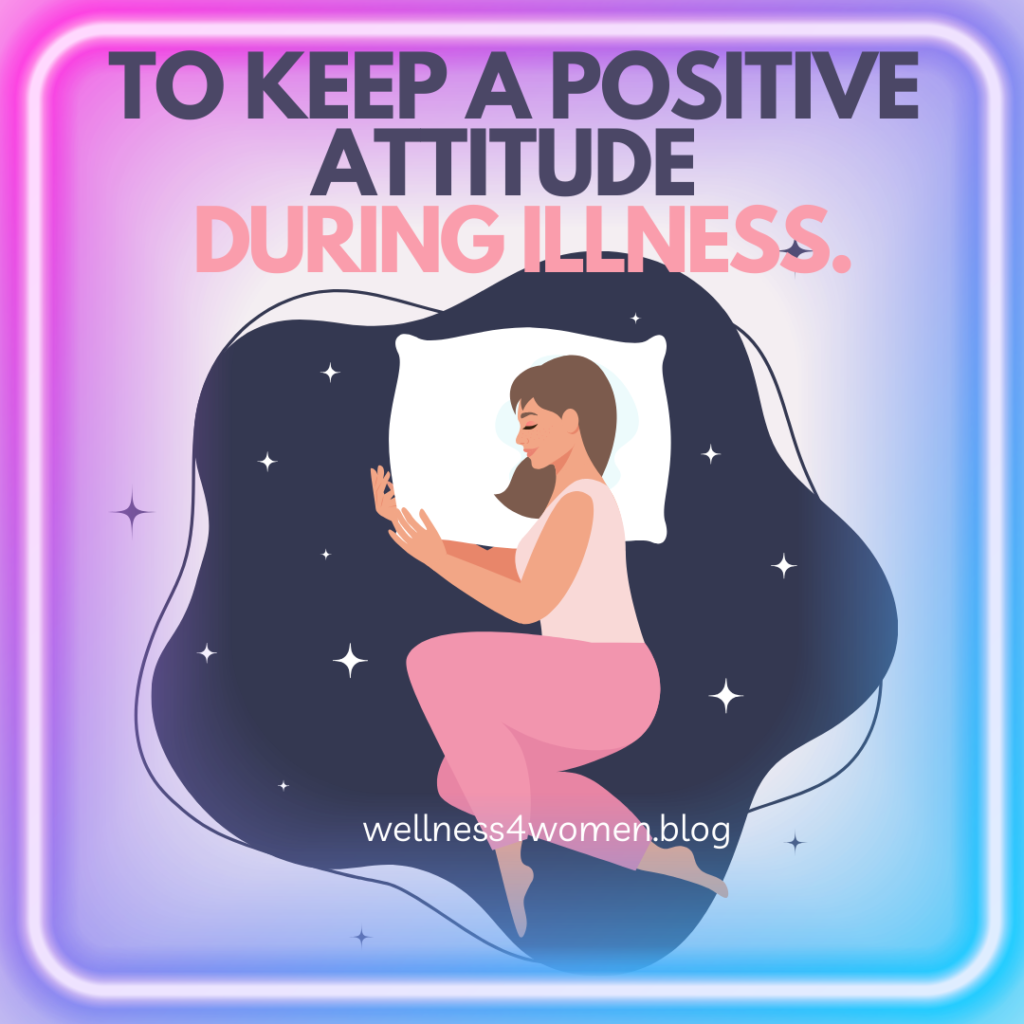
What If You’re Sick for a Long Time?
With serious illnesses, you may remain sick for some time. If you spend your time thinking of the good things that are still available to you, you’ll still experience happiness.
Even small joys can keep you positive and peaceful when you allow yourself to feel the joy of the moment.
To help You Stay Joyful, Consider these Options:
1. Spend time with loved ones. Use this time to get closer to those you care about. Rather than engaging in idle chitchat to pass the time, talk with them about things that really matter to both of you. Share your thoughts, feelings, and desires.
2. What can you do? Focus on things you’re still able to do and enjoy, as opposed to the things you can’t.
3. Help others. You’ll find that doing what you can to help others helps you as well. Focusing on the needs of other people can make you feel better about yourself.
For everyone who is facing a serious illness, there are people who are worse off in some way.
When you reach out to them, it puts your struggles in perspective and gives you someone to relate to.
4. Use positive affirmations. Replace worry and negative thoughts with positive statements as soon as they appear.
With repetition, you’ll begin to do this automatically. Soon, you’ll discover a more peaceful, positive, and joyful mindset, which can also help you physically.
You’ll still face challenging days and trying situations, but there’s happiness to be found even when you’re sick.
Be willing to open your heart and mind so you can find that joy.
Even with a serious illness, it’s still possible to laugh, love, and experience great joy if you only allow it to come into your life.
I hope that how to keep a positive attitude during illness. And the Four Ways to Keep a Positive Attitude During Illness is helpful to you.
Ensure you subscribe- it’s free. And let me know if you are struggling with an illness and how you are coping with it.
In the meantime,
Live Life on Purpose Because Your Wellness Matters!

Could You Be Sleeping Too Much?
Could You Be Sleeping Too Much? When someone says they have sleep issues, you may assume they’re getting less than the recommended 7 to 9 hours. But you might be surprised to hear that the other extreme can be harmful, too.
Are you sleeping too much? In this blog, we explore whether you are sleeping too much and what you can do about it.
Hypersomnia
Oversleeping is a recognised sleep disorder called hypersomnia. It can have many causes and can affect your mental and physical health.
Some fluctuations are natural; even so, it’s worth investigating when you’re sleeping.
If you regularly sleep for over 9 hours and don’t feel refreshed, learn more about oversleeping and how to avoid it.
Understanding Oversleeping
Ironically, many causes and consequences of oversleeping are similar to sleep deprivation. Recognising the symptoms is the first step toward making positive changes.
Keep these facts in mind:
- Know your needs. Your age and activity level influence how much sleep you need. You may also require more rest when you’re under stress or recovering from an illness.
- Protect your heart. Research shows that women who sleep 9 or more hours on a regular basis may be more likely to have heart disease than women who sleep for 8 hours. Cutting back is a smart choice for your heart, along with exercise and a balanced diet.
- Prevent diabetes. Almost half of adults with type 2 diabetes have sleep issues due to unstable blood sugar and related symptoms. Healthier habits could make your condition more straightforward to manage.
- Relieve pain. Too much rest could be making your head and back ache more. Try resuming your usual activities as much as possible.
- Lose weight. Poor quality sleep increases your risk for obesity. That’s partly due to a variety of metabolic disorders and increased cravings for high-calorie foods.
- Consider counseling. Depression and anxiety are more likely to cause insomnia, but they can have the opposite effect too.
Talk therapy and medication may boost your mood and strengthen your coping strategies.
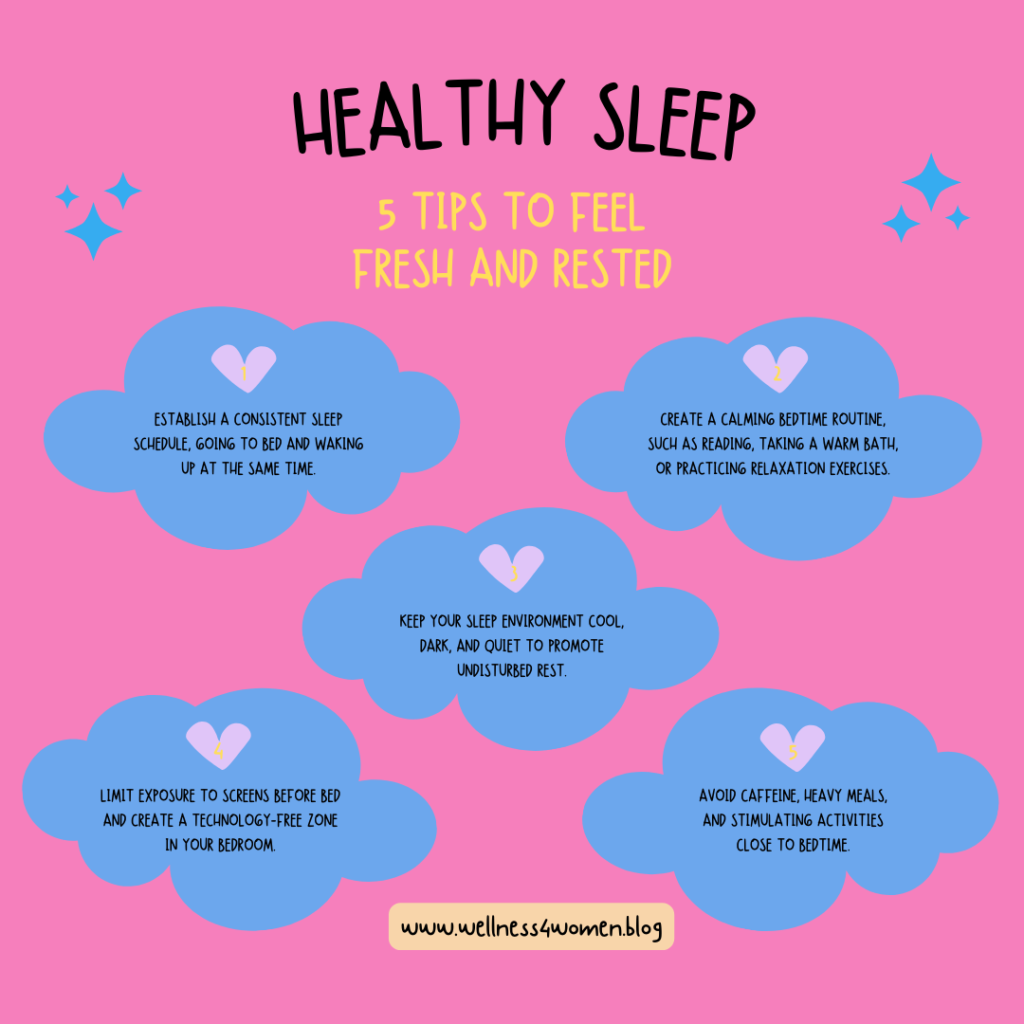
Avoiding Oversleeping
Focusing on the quality of your sleep can help you overcome hypersomnia, as well as insomnia.
Many experts believe how well you sleep is at least as important as how long you sleep.
Try these tips:
- Stick to a schedule. A consistent bedtime is one of the most powerful sleep habits. Your goal is to wake up naturally feeling refreshed instead of reaching for the snooze button.
- Avoid napping. Regardless of how much you sleep, it’s tempting to go back to bed if you feel tired. Unfortunately, that can disrupt your overnight rest. If you’re not ready to give up napping, do it early and keep it brief.
- Upgrade your bedroom. Adjust your sleeping environment. Block out light and background noise. Check if you need a new mattress or pillows.
- Drink responsibly. Alcohol will help you to nod off faster, but it disrupts your natural cycles. Studies also show that adults who drink have a 25% higher risk for sleep apnea, a common cause of hypersomnia and insomnia. Take days off from alcohol and skip the nightcaps.
- Keep a diary. Writing about your sleep behaviour might help you spot patterns and discuss them with professionals. Use a paper journal or an app to record information like when you go to bed and wake up and the number and duration of sleep interruptions you experience overnight.
- See your doctor. A physical exam can help rule out any underlying medical conditions. Your doctor can also refer you to a sleep specialist for further tests and treatment.
For most adults, getting 7 to 9 hours of high-quality sleep each night is the winning formula for maintaining your health and productivity. If you need more help with sleeping too much or too little, talk with your doctor about your concerns.
To Learn More About Your Wellness, visit The Life Elevation Project, click HERE
Affiliate Link: Got a YouTube channel? To Get More Views and Subscribers, click this link to get your free TubeBuddy today. https://www.Tubebuddy.com/pricing?a=Wellness4Women
Why We All Need Collagen for Good Health
We all need collagen in our diet. Collagen is a term you might have heard used by beauty companies. Maybe you have seen it written on a bottle of wellness supplements. Collagen is one of the better-known substances in the human body. And it’s one of the most abundant proteins you have. For over 20 years, I have used collagen topically and in supplement form.
Collagen isn’t just the substance that determines whether your skin will continue looking youthful and fresh for as long as possible – it’s also the main component of the connective tissues making up various parts of your body.
Without collagen, you wouldn’t have your ligaments, skin, muscles, and tendons.
Here’s your guide to collagen and why it’s so important for good health.
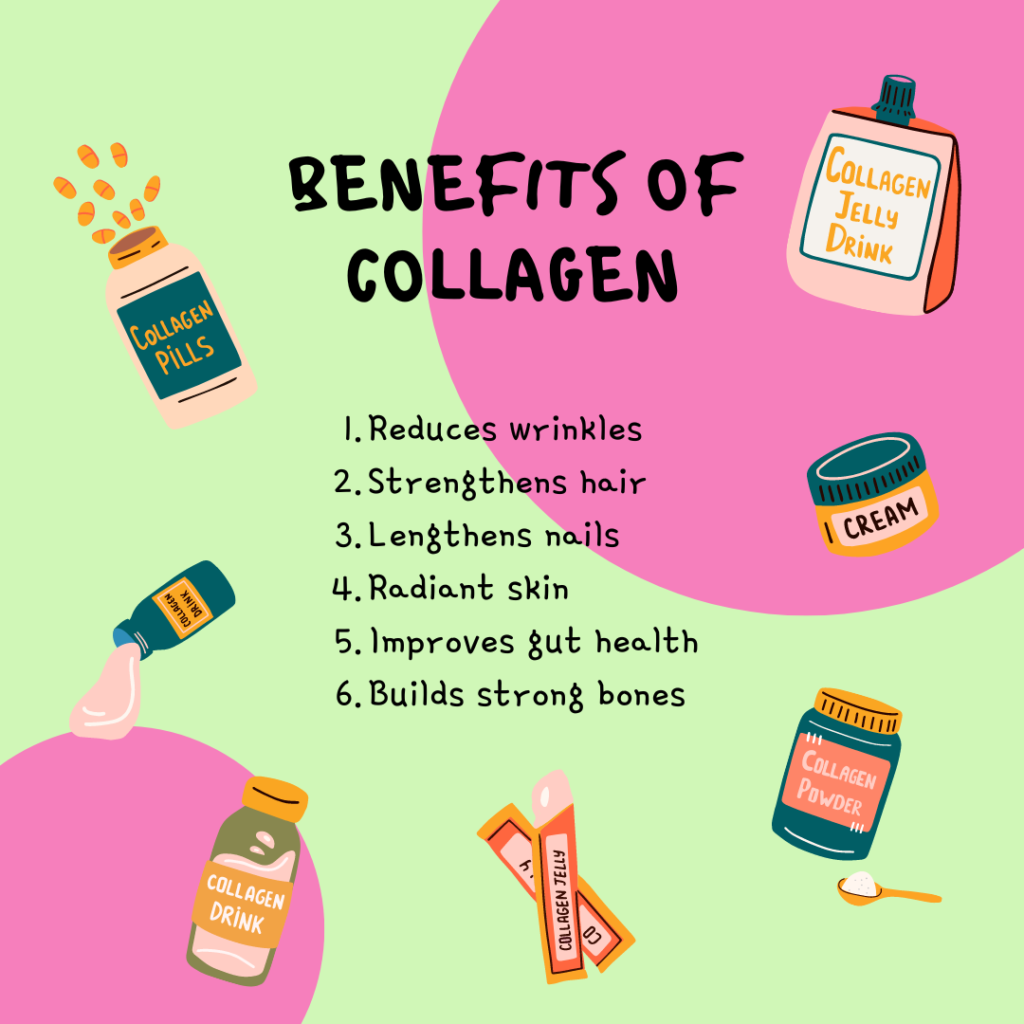
What is Collagen? An Introduction
Collagen is your body’s most abundant protein, responsible for forming critical tissues in your body and performing various functions (like strengthening your bones).
Scientists know of a total of 28 types of collagen. The most common four are:
- Type I: The collagen found in all connective tissues
- Type II: The collagen found in intervertebral discs and joints
- Type III: The main component of reticular fibres found in your skin and blood
- Type IV: The component in your kidneys, eye lens, and inner ear
The collagen naturally produced in your body begins to break down. And it becomes harder for your body to produce more. You can improve your collagen levels by getting more of the substance’s collagen needs to form into your diet.
For your body to produce collagen, you need a host of essential nutrients, including…
- Proline (found in cabbage and dairy),
- Glycine (found in gelatine),
- Vitamin C (found in citrus fruits),
- Zinc (found in chickpeas and nuts),
- Copper (found in cashews and lentils).
Collagen supplements, available in various powders and pills, can also replenish your collagen levels.
What Are the Benefits of Collagen Supplements?
As you get older, your natural levels of collagen begin to drop. This is when you may consider taking collagen supplements.
Collagen is an essential component of many critical parts of your body, and it is essential to maintaining good health. Taking supplements can help you avoid a range of issues.
Some of the benefits of supplementation with collagen include:
Improved Skin Health
Collagen is an essential part of healthy skin, so it makes sense that collagen supplementation would improve skin health.
Studies show that collagen peptides and supplements can help slow the skin’s ageing and even improve its elasticity. Collagen can also help keep your body hydrated and may even stimulate the skin to produce collagen on its own.
Stronger Bones
As we age, our bones naturally become more brittle and less dense. They break more quickly and take a lot longer to heal.
Studies show a daily collagen supplement could be a valuable tool in making your bones denser and slowing some dangerous parts of the ageing process. Collagen supplements could also be helpful in assisting with the development of new bones.
Thicker Hair
Aside from making your skin healthier, collagen supplements could also help improve hair health. Women and men often experience hair thinning and even baldness as they age.
However, collagen may help to improve the health of the scalp and boost the strength of your hair. This could mean you’re less likely to experience hair loss.
Reduced Joint Pain
Collagen forms an important part of the substances between your joints (cartilage). As you age and your collagen levels decrease, your risk of degenerative diseases like osteoarthritis increases.
Some studies indicate collagen supplements may be useful for helping to minimise joint pain.
Researchers also believe collagen supplements may also accumulate in cartilage and stimulate the production of new collagen.
Healthier Nails
Investing in collagen supplements could be a good idea if your nails tend to break easily. Collagen helps form the substances that make up your nails and hair, so taking supplements could help create stronger nails.
Improved Muscle Mass
Collagen, the most abundant protein in the body, is crucial for building skeletal muscle. Some studies suggest collagen supplements may be effective in boosting muscle mass in people with muscle loss issues. This important mineral can help promote the synthesis of various other muscle proteins and stimulate muscle growth.
Better Heart Health
Researchers believe collagen supplements may be valuable for reducing the risk of heart conditions. This is because collagen helps to provide structure to your arteries.
Without enough collagen, arteries may become less flexible, which could lead to a higher risk of atherosclerosis.
There’s no arguing with the fact that collagen is one of the most important substances in your body. If you’re concerned that you don’t have enough of this essential protein as you’re getting older. Try taking a collagen supplement because it could be a helpful strategy as you age.
Just remember to talk to your doctor before you start supplementation.
To Learn More About Your Wellness, visit The Life Elevation Project, click HERE
Affiliate Link: Got a YouTube channel? To Get More Views and Subscribers, click this link to get your free TubeBuddy today. https://www.Tubebuddy.com/pricing?a=Wellness4Women
Why Too Much Calcium Can Be Dangerous!
You’ve probably heard you need more calcium to have strong bones and a healthy body. However, are you aware of the risks of taking too much calcium? Did you know that calcium can be Dangerous?
A Big Warning – You can overdose on this mineral, and there are awful side effects.
I was taking calcium supplements until I learnt what I am sharing with you now.
It’s true that your body needs calcium. But it’s important to take the right amount. There is no doubt that this is an important mineral. But let’s be aware that too much calcium can Be dangerous and cause unwanted problems.
Daily calcium requirements.
To understand why too much calcium can be dangerous, you need to be aware of how much calcium you need to take every day. The recommendations vary based on your age, gender, and health history.
In general, children need 1,000 to 1,300 mg a day.
Adults need 1,000 mg a day.
However, women over the age of 70 need 1,200 mg a day.
Common Side Effects
Constipation.
One of the most common side effects of taking too much calcium is constipation.
This usually occurs if you take too many supplements that have high levels of calcium. It’s rare for you to get constipation from calcium in foods, but it can happen if you overeat.
Kidney Stones.
Passing a kidney stone is worse than giving birth- so I have been told. So, I don’t have to find out for myself, so understanding the risks is important. Be aware that you can have a higher risk of kidney stones from taking too much calcium.
Several studies have found that those who take excessive amounts of mineral supplements are more likely to develop kidney stones. The minerals build up within the kidneys, forming small stones.
Other Health Issues.
By overdosing on calcium, you may notice several health issues at the same time.
Some of the most common issues are nausea, weakness and the loss of appetite. You may also experience excessive thirst. You may also have vomiting and feel unwell for a long period.
High levels of calcium can affect iron absorption in your body.
It’s also possible to have a more severe reaction from overdosing on calcium. An irregular heartbeat is a severe reaction to calcium overdose.
You may also have mental confusion and high blood pressure. One of the biggest risks is a coma – Scary!
How to Prevent Overdose
Most experts agree that prevention is easier than cure. However, solving the issues that arise from taking too much calcium can be problematic.
Be careful with the supplements you take and how many vitamins you take at the same time. If you combine multiple pills and minerals, then you can easily overdose on calcium.
It’s important to discuss your calcium levels with a doctor. They can recommend diet changes and supplements that are safe.
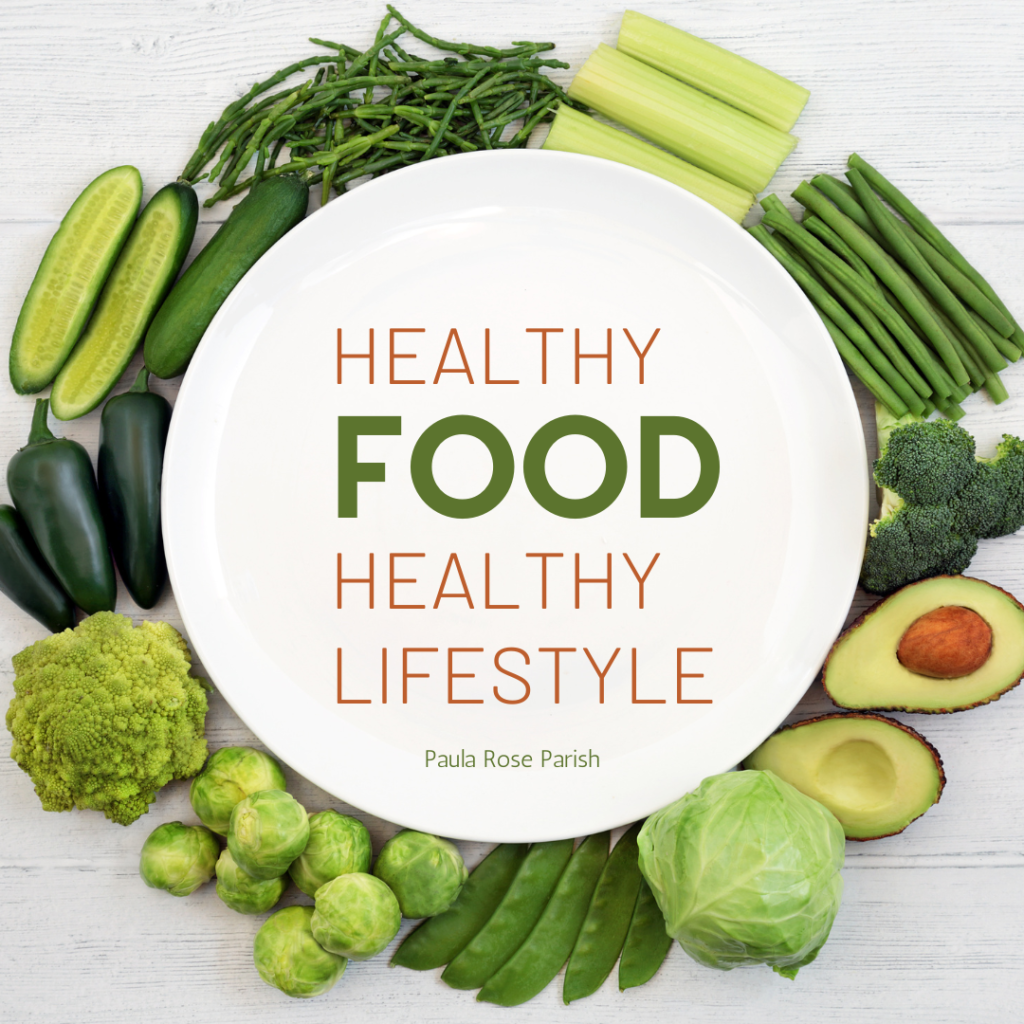
Focus on Food instead of Pills.
It may be tempting to reach for a bottle of calcium supplements instead of working on your diet. However, you’re putting yourself at risk and may not be helping your body.
Nutritionists recommend that you focus on the food that you eat rather than trying to supplement with pills. The good news is that calcium is readily available in many foods.
You can find it in dairy products, but there are other options if you’re lactose intolerant or vegan.
Calcium is in kale and broccoli. Many dark leafy vegetables have high levels of this mineral. It’s also in salmon and sardines.
You can get more calcium by eating fortified foods. Cereals, breakfast bars, granola, and many others are good sources of calcium. Also, many kinds of nuts contain calcium.
Although too much calcium can be dangerous, it is considered an essential mineral for health. Calcium has multiple health benefits. Although your body requires it to be healthy, it’s essential to ensure you’re not taking too much.
In most cases, you’ll get better results by eating calcium-rich foods. Instead of taking supplements, but discuss your particular needs with your doctor.
Affiliate Link: Got a YouTube channel? To Get More Views and Subscribers, click this link to get your free TubeBuddy today. https://www.Tubebuddy.com/pricing?a=Wellness4Women
My Body Improvement Workout
Before I got started on my body improvement workout, I needed to take into consideration my levels of fitness and health conditions, which may have preceded it.
It is always good to consult a healthcare professional before engaging in any new exercise program.
That said, here is a general workout routine for Body improvement.
The main focus is on strength, flexibility, and cardiovascular health:
Warm-up:
- March in Place: 5 minutes, light, to get the heart rate up and the muscles warm.
- Shoulder Rolls: 2 minutes, rolling front and back for loose upper body
- Arm Circles: 2 minutes, gentle rotations of the arms in small circles, front and back
Resistance Training
Do 1–2 sets of 10–15 repetitions for each exercise. Use light weights or resistance bands. Adjust the intensity based on the client’s ability.
Bodyweight Squats :
- Stand with your feet hip-width apart.
- Lower slowly into a seated position as if sitting back into a chair.
- Keep your chest up and your back straight.
- Return to standing position.
Wall Push-Ups:
- Stand with your feet about two feet away from a wall.
- Place your hands on the wall at shoulder height.
- Lean forward, lowering your body toward the wall, straighten your arms and push away.
Chair Dips:
Sit on the edge of a sturdy chair with your hands beside your hips.
- Sliding your bottom off the chair, lower your body towards the floor
- Push back up to the beginning position.
- Leg Raises
- Sit tall in a chair with feet flat on the floor
- Lift one leg straight out in front, hold briefly, and lower it back down
- Repeat on the other leg
Cardiovascular Exercise
- Choose activities that are low-impact, and that you enjoy
- Walking (15–30 minutes)
- Brisk walking is an excellent, low-impact cardio exercise.
- Starting with a duration that is comfortable and, over time, gradually building up.
Swimming or Water Aerobics as available:
Water exercises are more accessible on joints but add resistance for strengthening.
Flexibility and Balance:
Seated Toe Touches – 5 minutes
- Sit in a chair with feet flat on the floor
- Bend down to touch toes – keep back straight
Chair Yoga
Add some light yoga movements that can all be done using a chair for support.
- Cool Down
- Deep Breathing (5 minutes):
- Sit comfortably, breathe slowly, and then exhale deeply to relax your body.
- Neck and Shoulder Stretches (5 minutes):
- Tilt your head from side to side, then roll your shoulders as you help push away tension from the muscles.
- Remember to listen to your body and modify exercises as needed
I hope you will try My Body Improvement Workout. If you do, let me know.
Here is a link to Pahla B YouTube Videos for over 50s that I use daily to guide me through exercise.
To Learn More About Fitness and The Life Elevation Project, click HERE
Affiliate Link: Got a YouTube channel? To Get More Views and Subscribers, click this link to get your free TubeBuddy today. https://www.Tubebuddy.com/pricing?a=Wellness4Women
5 Goals for Self-Improvement
The Elevate Your Life Project : 5 Goals for Self-Improvement
How can we work towards self-improvement?
Self-improvement is something we often talk about but rarely focus on. There are so many ways to seek it. Sometimes, we can make significant changes. Sometimes, however, we can create small changes and take small steps. Let’s take a look at five goals you could set.

- Establish a workout routine. Don’t just wait for the next new year to come around. Get yourself to the gym or establish a personalised workout routine and kickstart your journey to fitness.
- Consider getting an instructor or a personal trainer so you can see results over some time. Set some personal fitness goals and work towards those during your sessions.
- You will feel energised and you’ll have a sense of control over your life if you join a workout class. You can also meet new people and get valuable opportunities to socialise.
- Get on top of your finances. Sorting out your finances will free you from continued concern and worry and may even help make you feel more in control.
- Take charge of your finances. Consider your income and expenditures, and set financial goals that will make you happy. You could save for a holiday, home improvements, or some other satisfying reward.
- By getting on top of your finances, you can start looking to the future and take control of your money. You may be able to identify places where you can save money. You can budget effectively, reduce stress, and may be able to stretch your money further.
- Organise your home. Take an opportunity to redesign or organise your home.
- An organised, clutter-free home reduces stress and makes you feel in control of your life.
- When you organise your home, you can identify what you do and don’t need and consider a redesign project. This could inspire you and excite you, rekindling your passion for your home and personal spaces.
- Repair broken relationships. Friendships and relationships are a key part of a healthy, well-balanced life. Sometimes, we can lose touch with friends and family, and it’s important to reach out and repair broken or fractured relationships.
- Take some time to reconnect with someone you’ve been meaning to catch up with.
- Plan regular sessions in which you reconnect with friends. This will help remind you of how fortunate you are and will make you feel more supported.
- Build a social calendar into your life. You will learn so much from those around you, and you can teach others and pass on your wisdom. Knowledge is power!
- Consider your career. Take a moment to look at the career path you have chosen. Does it still fulfil you? Are you still engaging and giving it your all?
- If you feel stuck in a rut but don’t want to change your career, consider whether you could move departments, push for a promotion, or reinvigorate your current position.
- If you’re keen to jump ship and overhaul your career, consider whether you should pursue further education.
- What motivates you? Do some research into your dream career, speak to like-minded friends, and volunteer to gain skills and achieve self-satisfaction.
There are many ways we can improve ourselves. Sometimes, all we need to do is take a step back and reevaluate our position in life. Remember, you are in control of the choices you make to improve yourself and your life. Be bold!
To Learn More About the Life Elevation Project, click HERE
Affiliate Link: Got a YouTube channel? To Get More Views and Subscribers, click this link to get your free TubeBuddy today. https://www.Tubebuddy.com/pricing?a=Wellness4Women
How to Declutter Your Home
Clear Your Space and Elevate Your Mental Health
Where to get started with decluttering can be daunting. I often get overwhelmed when I am confronted with my stuff all over the place. So, let’s talk about How to Declutter Your Home!
I know I need to clean up because it affects my mental health in many ways. When my home is messy, I feel I have a cluttered mind, and focusing on a task seems impossible.
I created How to Declutter Your Home because you may have similar experiences with how clutter makes you feel. So, let’s dive in and get started with decluttering!
We are prone to consumption, and this means we tend to accumulate many items over the course of our lifetime. There will come a time when you need to declutter. When you have a house full of stuff, however, it can be hard to know where to start. Use the tips below to help you get started?.

Pick your worst Room.
You probably already know which room is bothering you the most. This is where. When you see how great it looks, you will be inspired to continue with the rest of the house.
Visualise the Room.
When deciding which room to start with, visualise what you want the space to look like.
?What are you hoping for the end result to be?
?What will you use the room for?
?What does your dream room look like? Write it clearly down.
You can use pictures or text when mapping out how you want the room to look.
Take some time with this. When you have a clear goal in mind, you are more likely to have the motivation to continue.
Start with what you See.
It can get overwhelming when you think about all the things that are in drawers and closets. Start with desktops, floor space, and the tops of dressers and tables.
Note: Clearing these areas will help you to feel like you’re making real progress, and can be a motivator when you are feeling flat or stressed.
Consider the Furniture.
Furniture can also contribute to how cluttered a room looks. Look at every piece in the room and make sure they serve a function, and are in the right place.
Reorganizing your space can totally transform a room, and this can be a great inspiration to keep going!
Prepare yourself Mentally.
It’s important to be physically prepared for your decluttering with bags and boxes on hand. You also need to prepare mentally.
Note: Understand that this process will take time and that you will not transform your home overnight.
Use a timer to keep you on Track.
Decluttering can be overwhelming, so break your time up into small, bite-sized chunks. Most experts recommend 15 minutes at a time.
Set a timer, get to work, and take a break when the buzzer goes off.
Give everything a Home.
One of the most important ways to succeed in decluttering is to ensure that every item in your home has its own designated space.
Note: Remember the mantra: a place for everything, and everything in its place.
Photograph sentimental Items.
It can be hard to let go of things that have meaning. One option is to take photographs of sentimental items.
Remember, the person who gave it to you would not want you to be weighed down and obligated to keep it.
Final Thoughts
Decluttering can feel like a monumental task, but as long as you keep going, stay strong, and complete each task, there will be plenty of benefits. You can enjoy reduced stress, more space to enjoy and, in the majority of cases, a reduction in housework!
By breaking down your decluttering tasks into small chunks, you increase your chances of success. Your will learn very quickly how to declutter your home.
All you have to do is get started!
Use this how to declutter your home guide to learn how you will like and share with others as we improve our mental health by decluttering our spaces!?
To Learn More About The Life Elevation Project, click HERE
Affiliate Link: Got a YouTube channel? To Get More Views and Subscribers, click this link to get your free TubeBuddy today. https://www.Tubebuddy.com/pricing?a=Wellness4Women
Creating Your Best Life
Creating Your Best Life– How to Create Your Best Life. The Link Between a Positive Mindset, Success, and Happiness. In this blog post, we will explore Creating Your Best Life and discuss the reasons why a positive mindset is key to your success and happiness.
What is a Positive Mindset?
It involves more than just maintaining a cheerful disposition. It is also personal development. It’s about developing the ability to learn from failures and moving forward despite setbacks.
Embracing Failures as Learning Opportunities
To create your best life, you need a positive mindset. A positive mindset is an attitude that embraces optimism. Optimism gives rise to resilience and a proactive approach to life’s challenges.
One of the core components of a positive mindset is the ability to view failures as valuable learning opportunities.
Maintaining a cheerful disposition is also a personal development. It helps us Embrace Failures as Learning Opportunities. A positive mindset is about developing the ability to learn from failures. Failure motivates us to move forward to success.
Rather than being discouraged by setbacks, a positive mindset considers them as stepping stones toward success.
This perspective empowers us to embrace unexpected challenges and view them as opportunities for growth and development.

Creating Your Best Life: Building Resilience Through Positivity
Resilience is the ability to bounce back from adversity. It is a strength of character that maintains focus on long-term goals.
A positive mindset is essential for building resilience. It helps individuals maintain a hopeful outlook even in the face of difficulties.
A positive mindset enables us to see beyond the immediate setbacks when we encounter obstacles and helps us envision a brighter future.
Research has shown that resilient individuals are more likely to succeed. This is because they possess the mental fortitude to keep going despite setbacks.
Resilient individuals are less likely to be discouraged by failures and more likely to adapt their strategies to overcome challenges.
Cultivating a positive mindset can help us develop resilience, which enables us to navigate life’s ups and downs with grace and determination.
Creating Your Best Life: Strategies for Cultivating Resilience
1. Practice gratitude. Regularly acknowledging and appreciating the positive aspects of life can help build resilience. Gratitude shifts focus from what’s going wrong to what’s going right, fostering a more positive outlook.
2. Set Realistic Goals. Break down larger goals into smaller, achievable steps. Celebrating small victories along the way boosts motivation and enhances resilience.
3. Surround Yourself with Positivity. Surrounding yourself with supportive and positive individuals can strengthen your resilience. Positive relationships provide encouragement and motivation during challenging times.
Creating Your Best Life: A Positive Mindset Enhances Creativity and Problem-Solving Skills
Fostering an Open Mindset can be learned and developed. A positive mindset encourages openness to new ideas and perspectives. When we approach challenges optimistically, we are more likely to explore innovative solutions.
When we think outside the box, our mindset fosters creativity. This allows us to see possibilities where others might see limitations. Creativity is crucial to success in various fields, from entrepreneurship to the arts.
A positive mindset embraces experimentation and takes calculated risks, which can lead to groundbreaking discoveries and achievements.
Overcoming Fear of Failure
Fear of failure is a common barrier to creativity and innovation. It has held me back from achieving success in the past.
A positive mindset helps overcome this fear by reframing failure as a natural part of the learning process.
Instead of being paralysed by the fear of making mistakes, we must be willing to try new approaches and learn from the outcomes.
This mindset shift allows us to approach problem-solving with confidence and curiosity. If we look at challenges as opportunities to learn and grow. We can develop innovative solutions that propel us toward the success we want.

Strategies for Enhancing Creativity
Practice Mindfulness. I can not overstate how integral mindfulness can be to success. I believe in it so much that I have often written about mindfulness.
Mindfulness exercises, such as meditation and deep breathing, can help calm the mind. It can enhance creativity by promoting clarity and focus.
Brainstorming is a mindfulness practice. Regular brainstorming sessions can stimulate your creative thinking.
Encourage yourself today to brainstorm and generate as many ideas as possible. Don’t judge yourself. Just allow your mind to explore different possibilities.
Embracing failure is a positive practice. Yes, you heard right! Embrace the idea that failure is a stepping stone to success. The only thing to fear- is fear itself!
When faced with setbacks, stay calm and analyse what went wrong. Then, you will learn from it and use the experience to improve future endeavours.
Creating Your Best Life: A Positive Mindset Improves Well-Being and Happiness.
Studies reveal that maintaining a positive mindset has a profound effect on mental health. It also affects emotional well-being. This is shown when individuals are less likely to suffer from anxiety and depression.
Positive thinking also promotes the release of endorphins, the “feel-good” hormones that contribute to improved mood and reduced stress.
Focusing on the positive aspects of life can help us develop a greater sense of self-worth and confidence—and that’s what we all want to aim for!
This self-assuredness enhances our holistic well-being. Which contributes to a more fulfilling and joyful life.
Strategies for Improving Well-Being
Cultivating Gratitude and Contentment
Gratitude is a powerful practice that can significantly improve life satisfaction. When we cultivate gratitude, we shift our attention from what we lack to what we have.
A grateful mindset fosters contentment and appreciation, which enable us to be present in the moment and lead to increased happiness and satisfaction.
A positive mindset encourages us to give thanks and celebrate small victories. It helps us to cherish meaningful connections in our lives.
By practising gratitude regularly, we can develop a deeper sense of contentment and joy.
When giving thanks, practice positive affirmations. Use affirmations to reinforce a positive mindset. Repeat affirmations daily to boost self-esteem and cultivate a positive outlook.
Engage in Physical Activity.
Science has shown that regular physical activity releases endorphins and promotes mental well-being. Exercise is a natural way to boost mood and enhance overall health.
Limit Negative Influences.
Reduce exposure to negative influences, such as adverse media or toxic relationships. Surround yourself with positivity and focus on uplifting experiences.
Use Your Positive Mindset as a Tool
In conclusion, a positive mindset is a powerful tool. Used correctly, it achieves success and happiness. It enhances resilience, boosts creativity, and improves overall well-being.
We can develop a positive mindset that propels us toward our goals and enriches our lives. By embracing challenges, fostering creativity, and cultivating gratitude,
As we navigate the complexities of our modern world, let us remember the importance of maintaining a positive mindset.
Remember,
We can unlock our full potential.
We can overcome obstacles.
We can create a life filled with joy, fulfilment, and success!
For More about Creating Your Best Life: The Link Between a Positive Mindset, Success, and Happiness, Click Here
How I Learnt to Live Mindfully
share how I Learnt to Live Mindfully. I found that Mindfulness worked well if I made it a lifestyle. I made mindfulness a well-habit.
How to Set Goals that Work
Here are tips that will help you identify your goals and How to Set those Goals
How to be Successful and Happy.
Let’s explore why a positive mindset is key to success and happiness
The Insidious Nature of Gaslighting, and Its Danger to Women.
Gaslighting is a form of psychological abuse which is most destructive in women.

